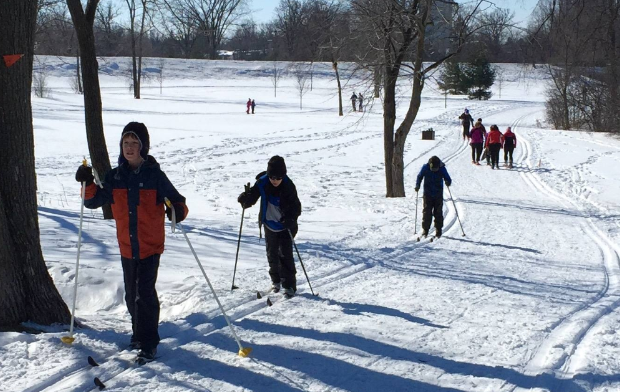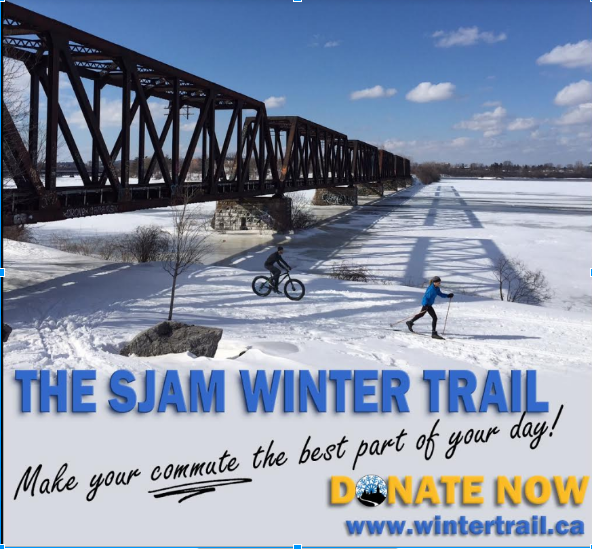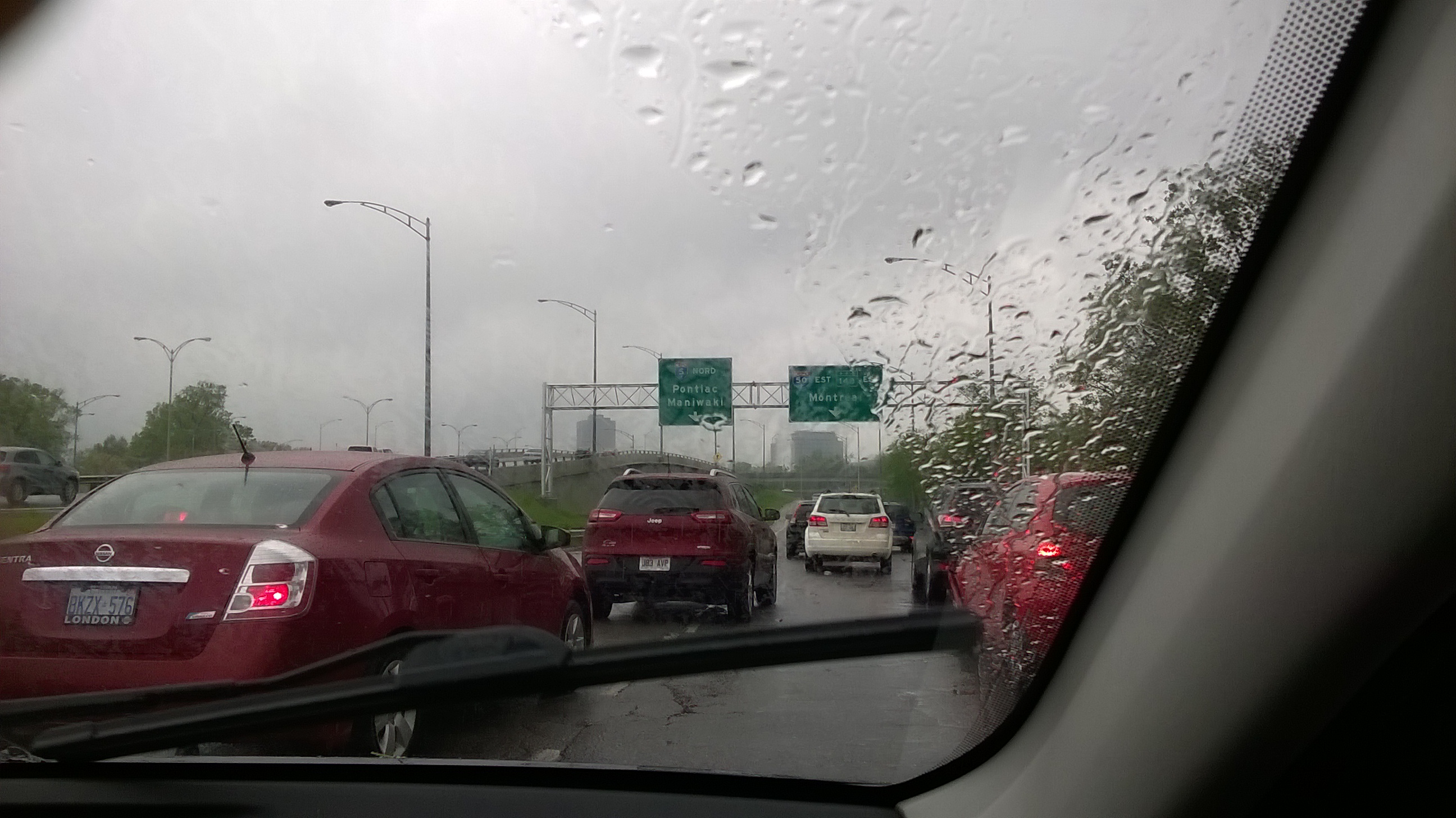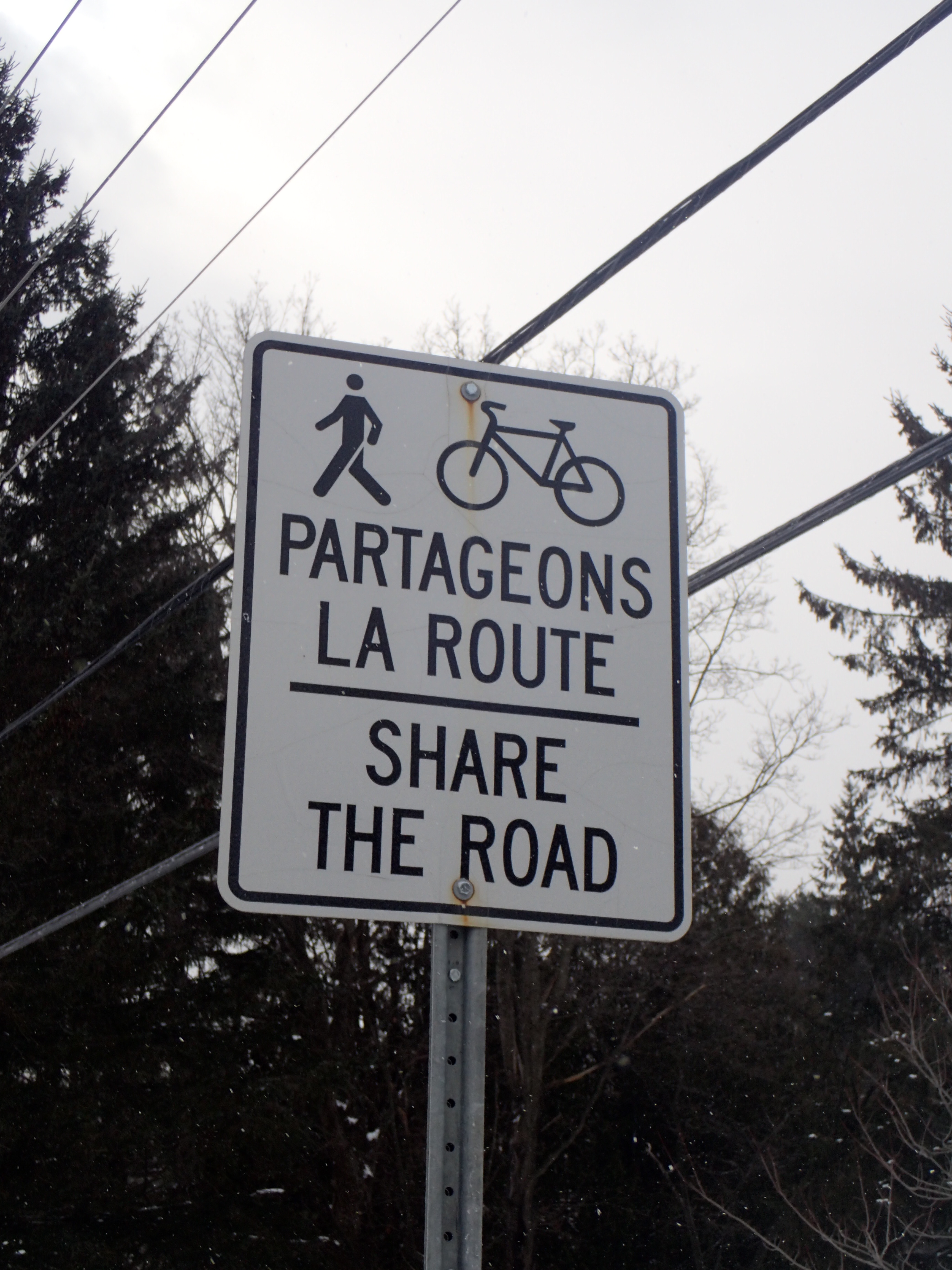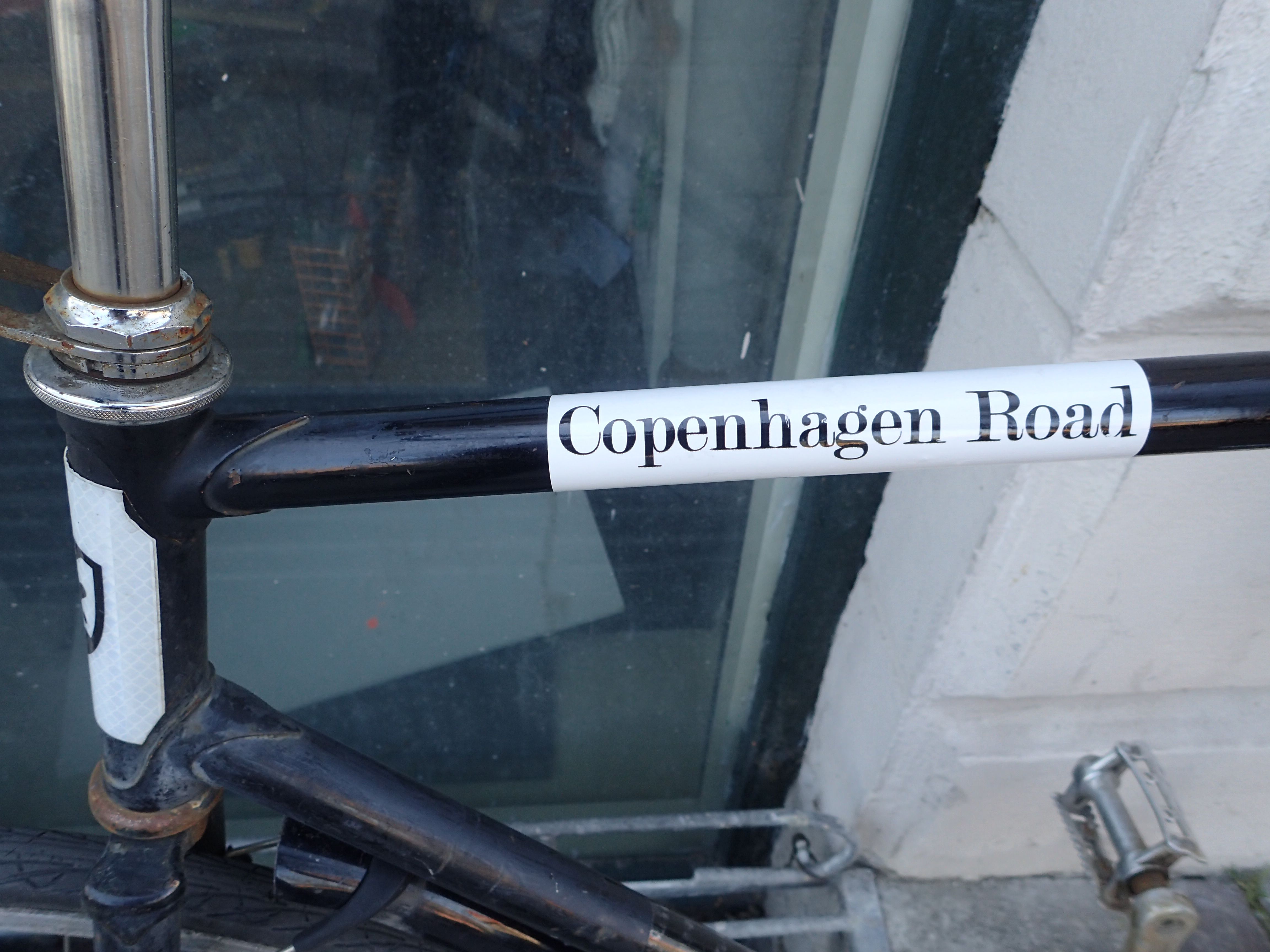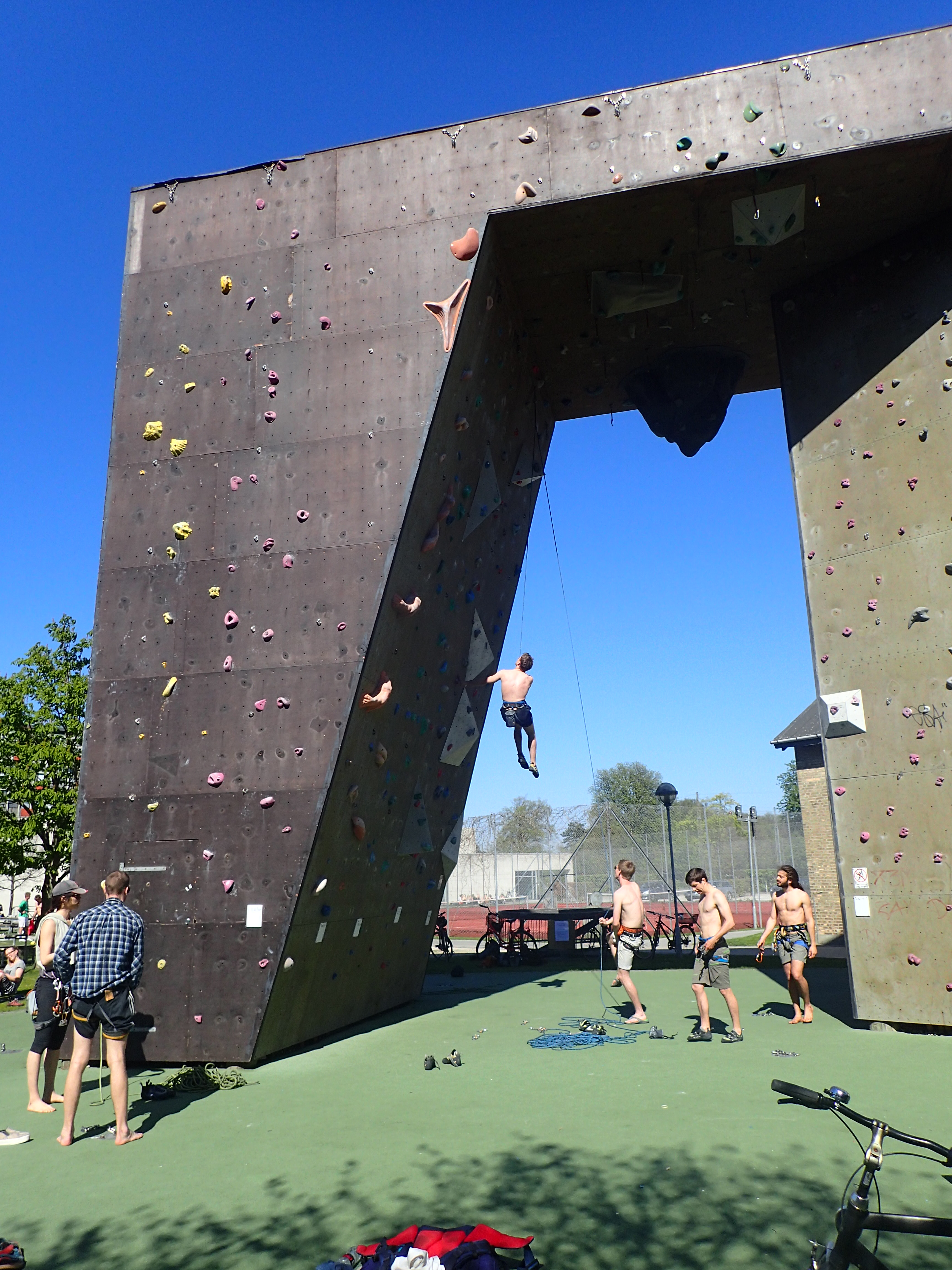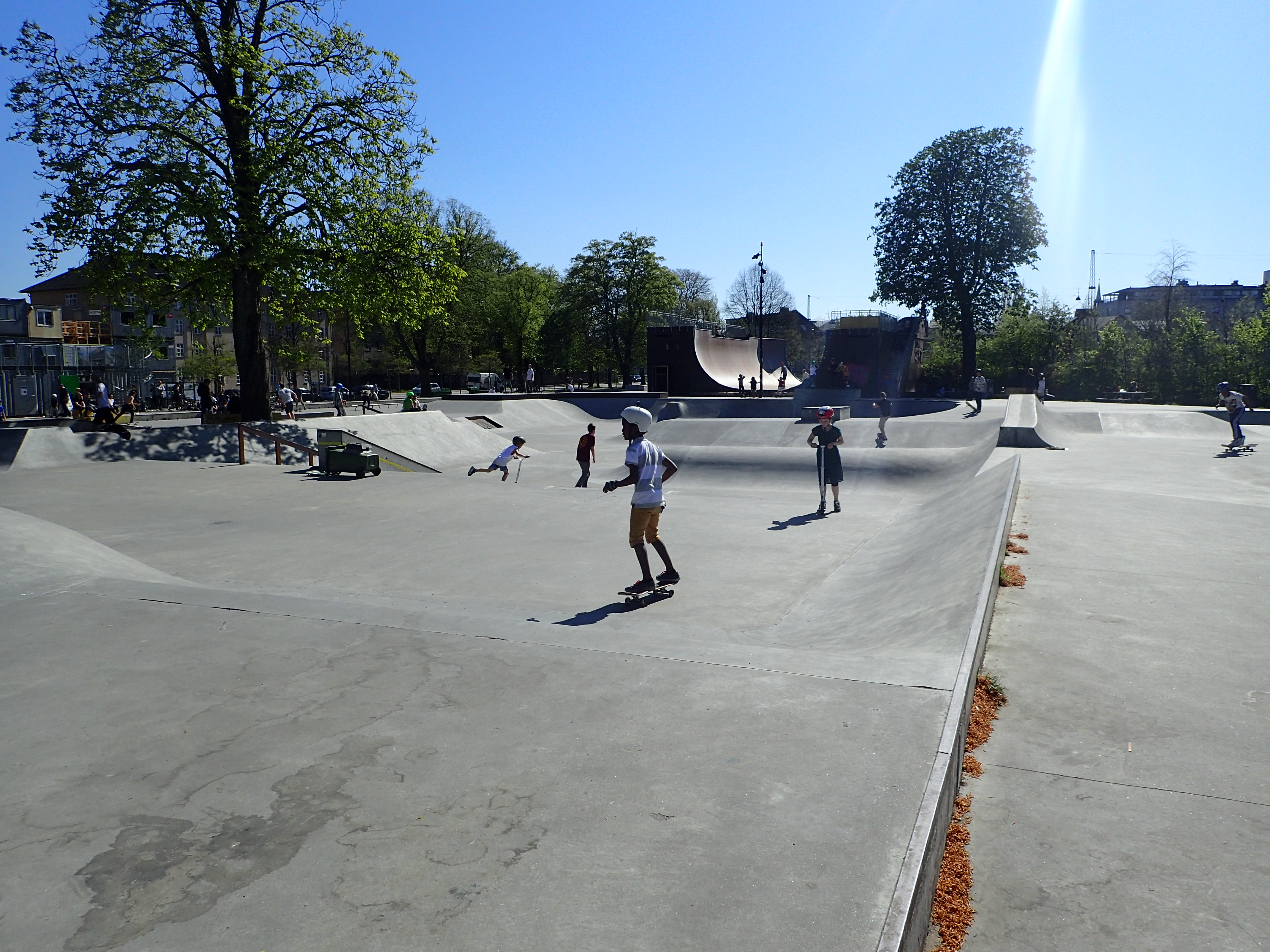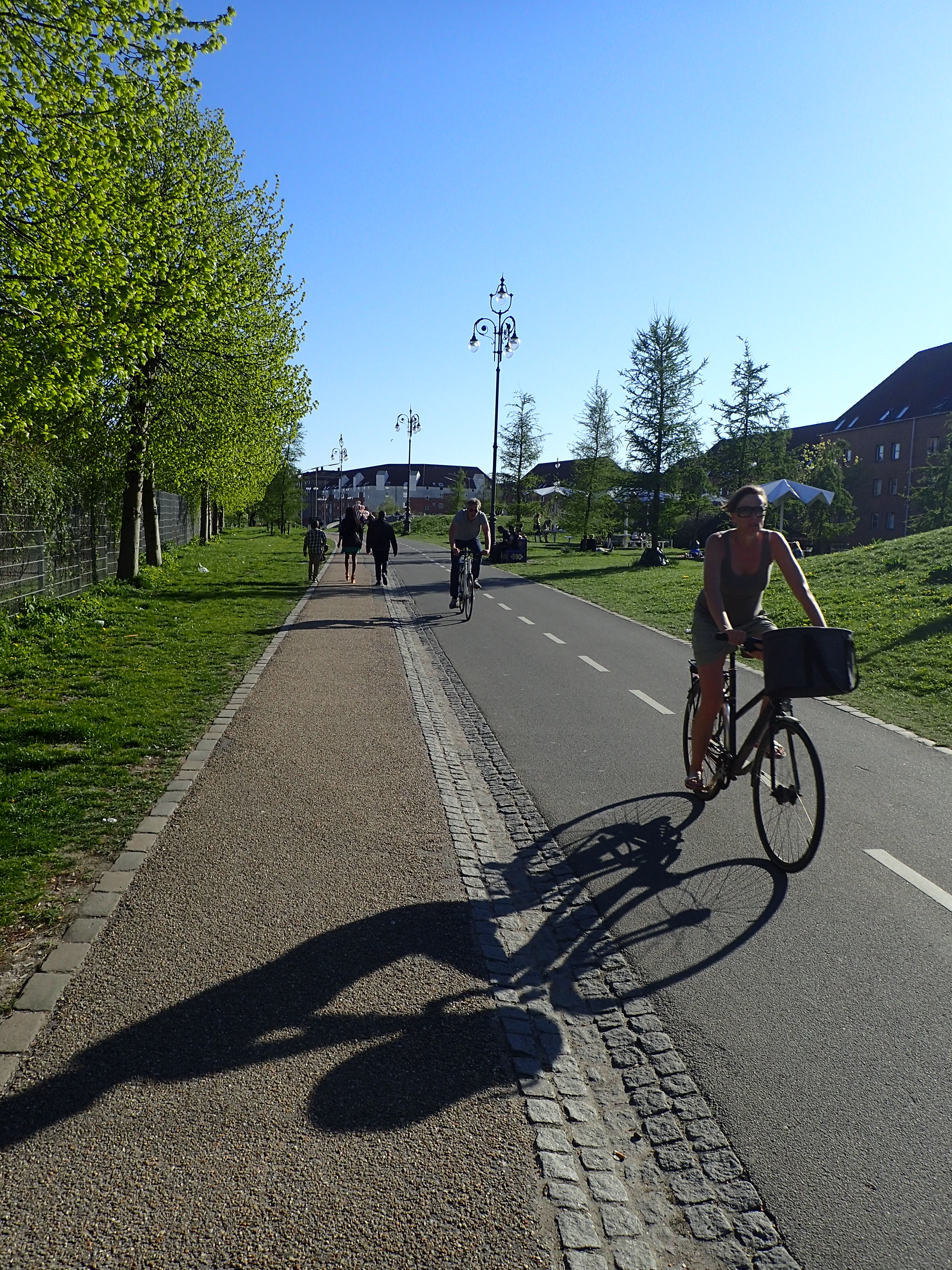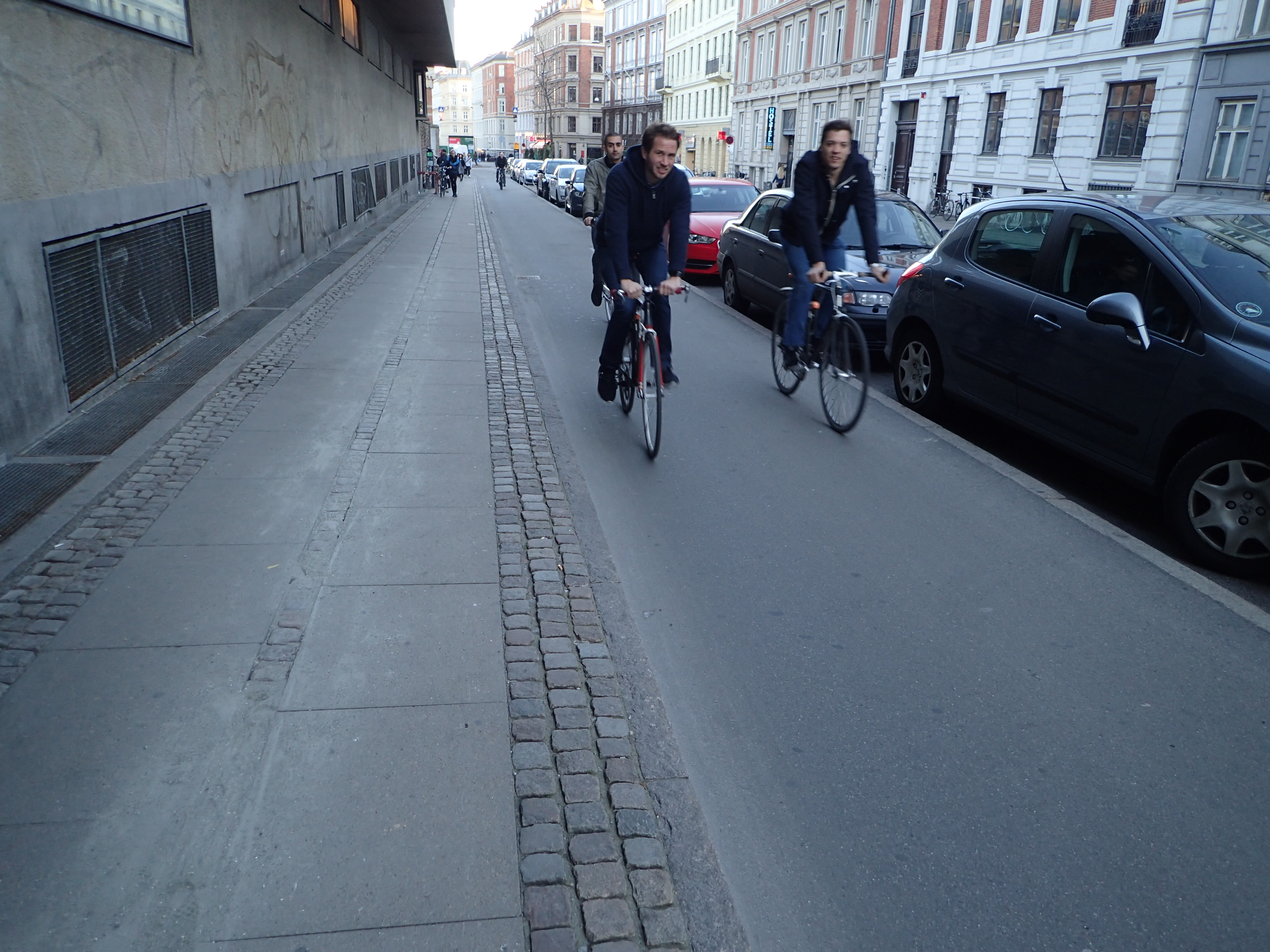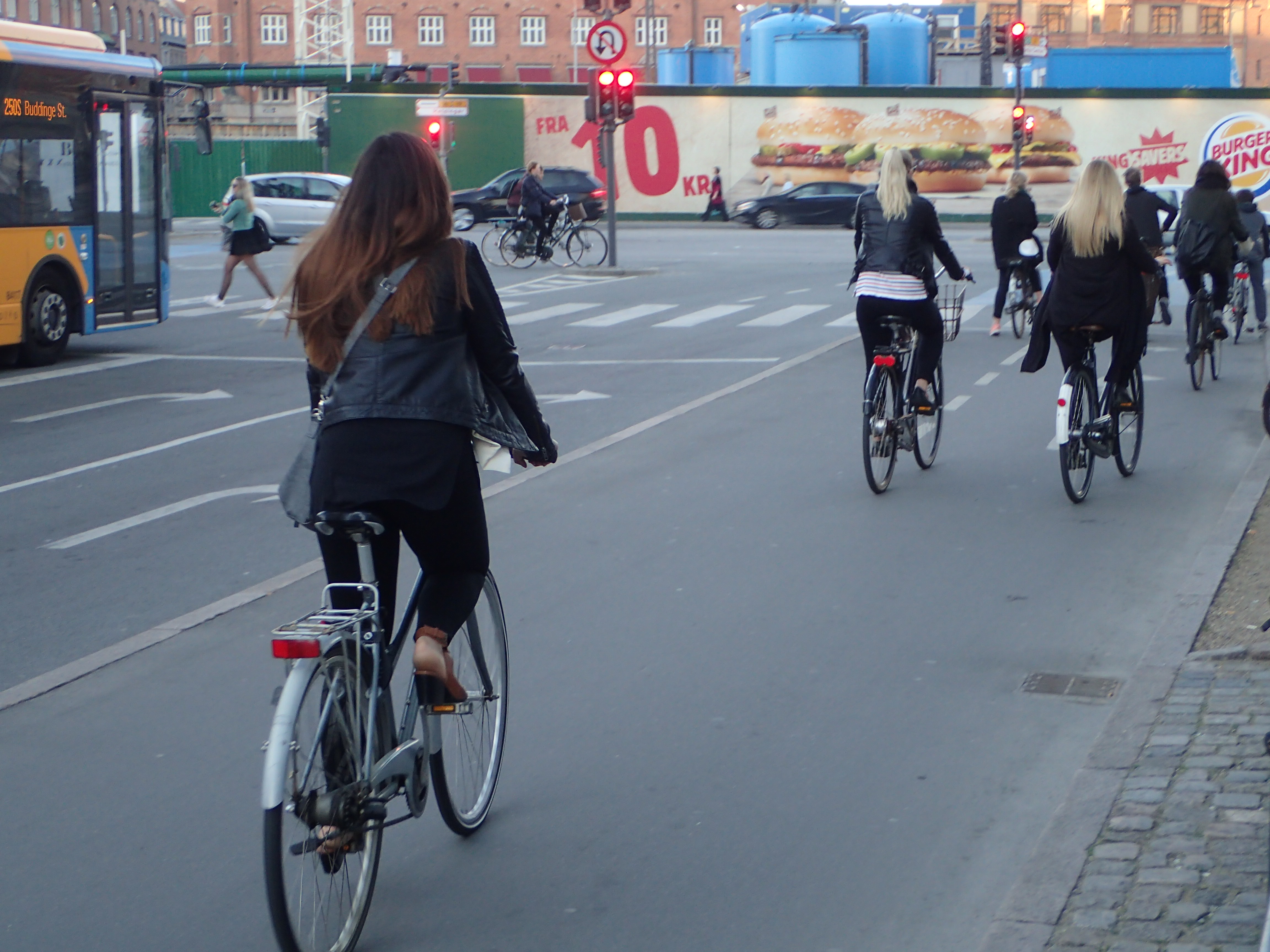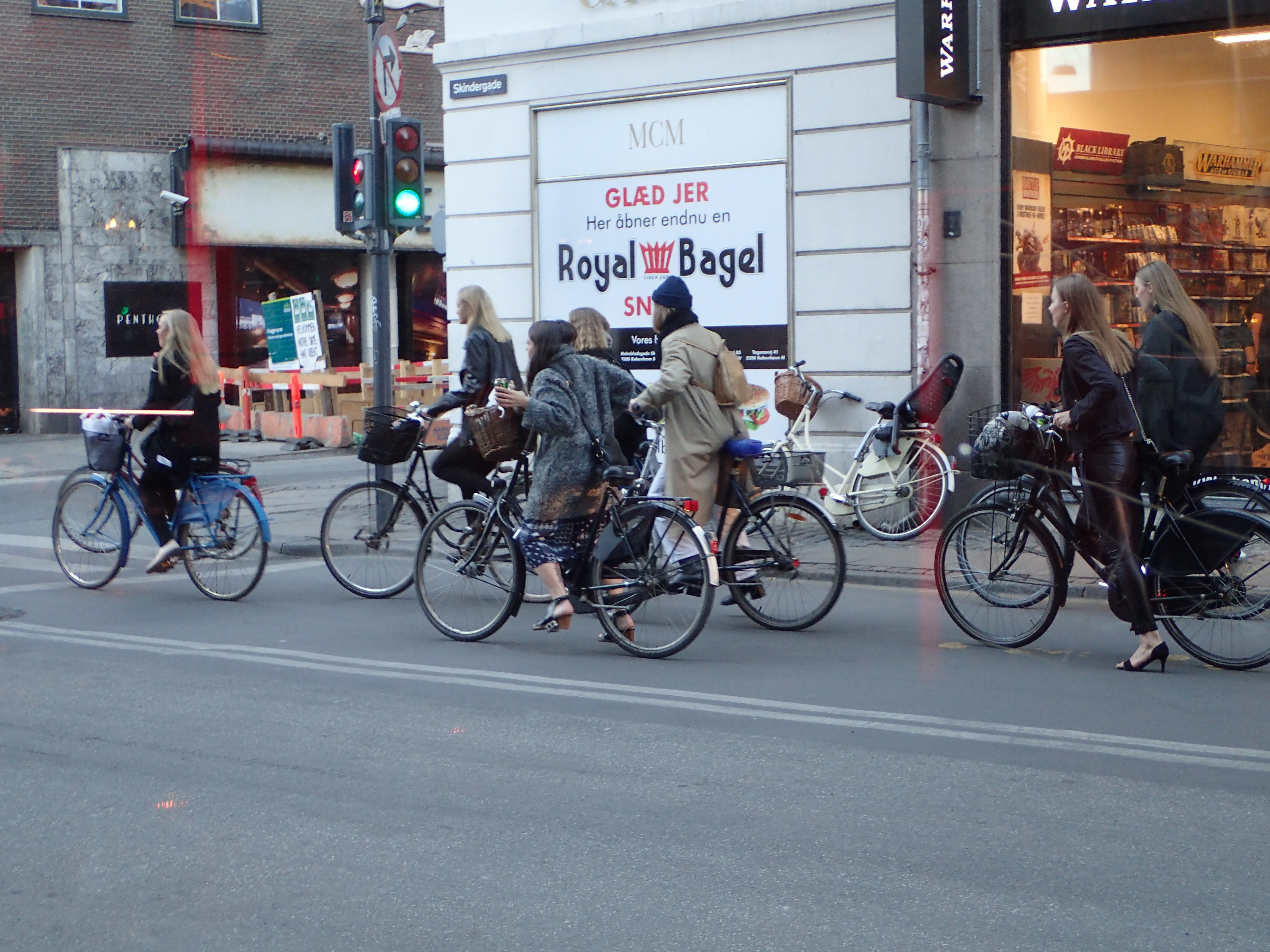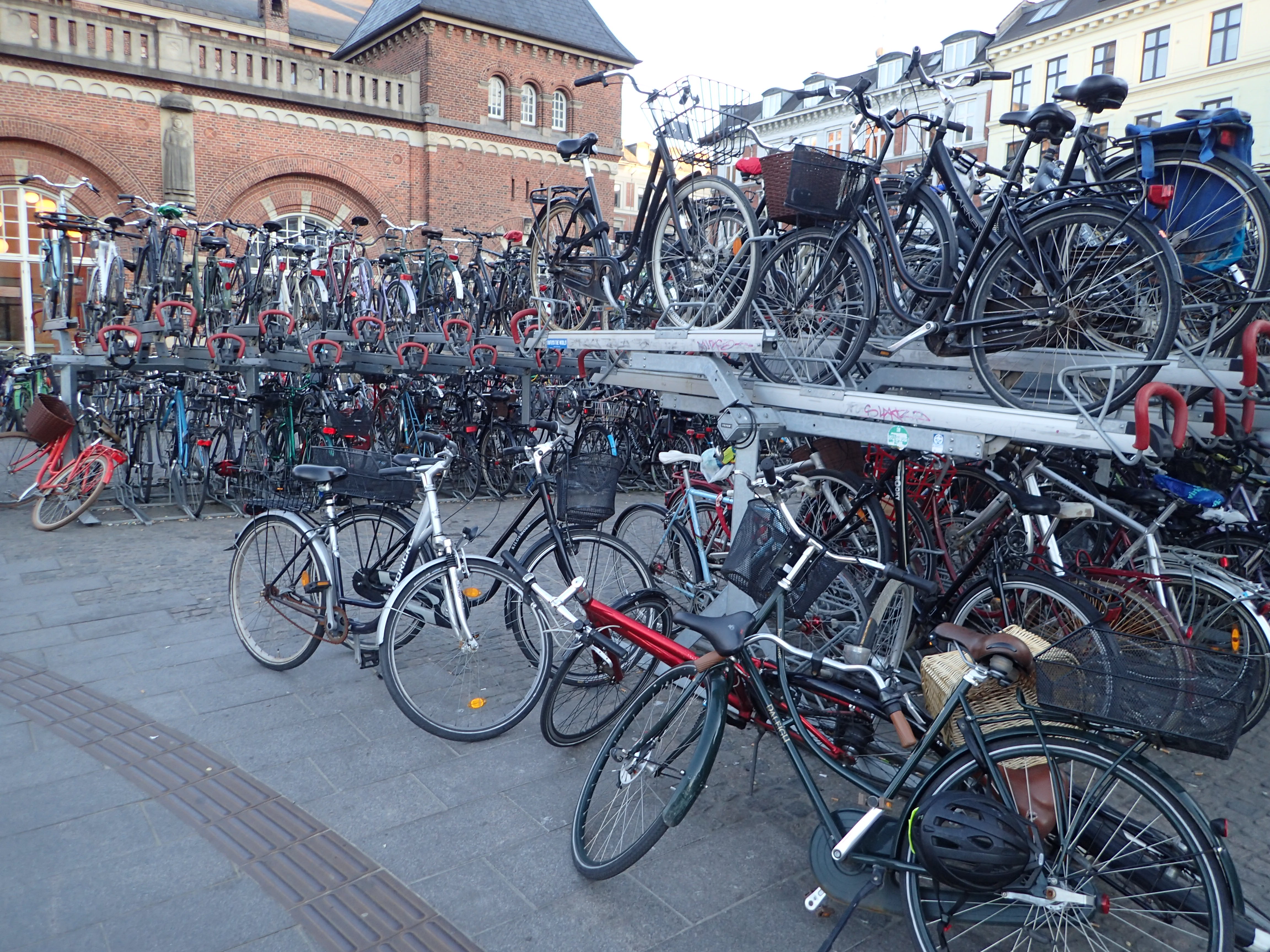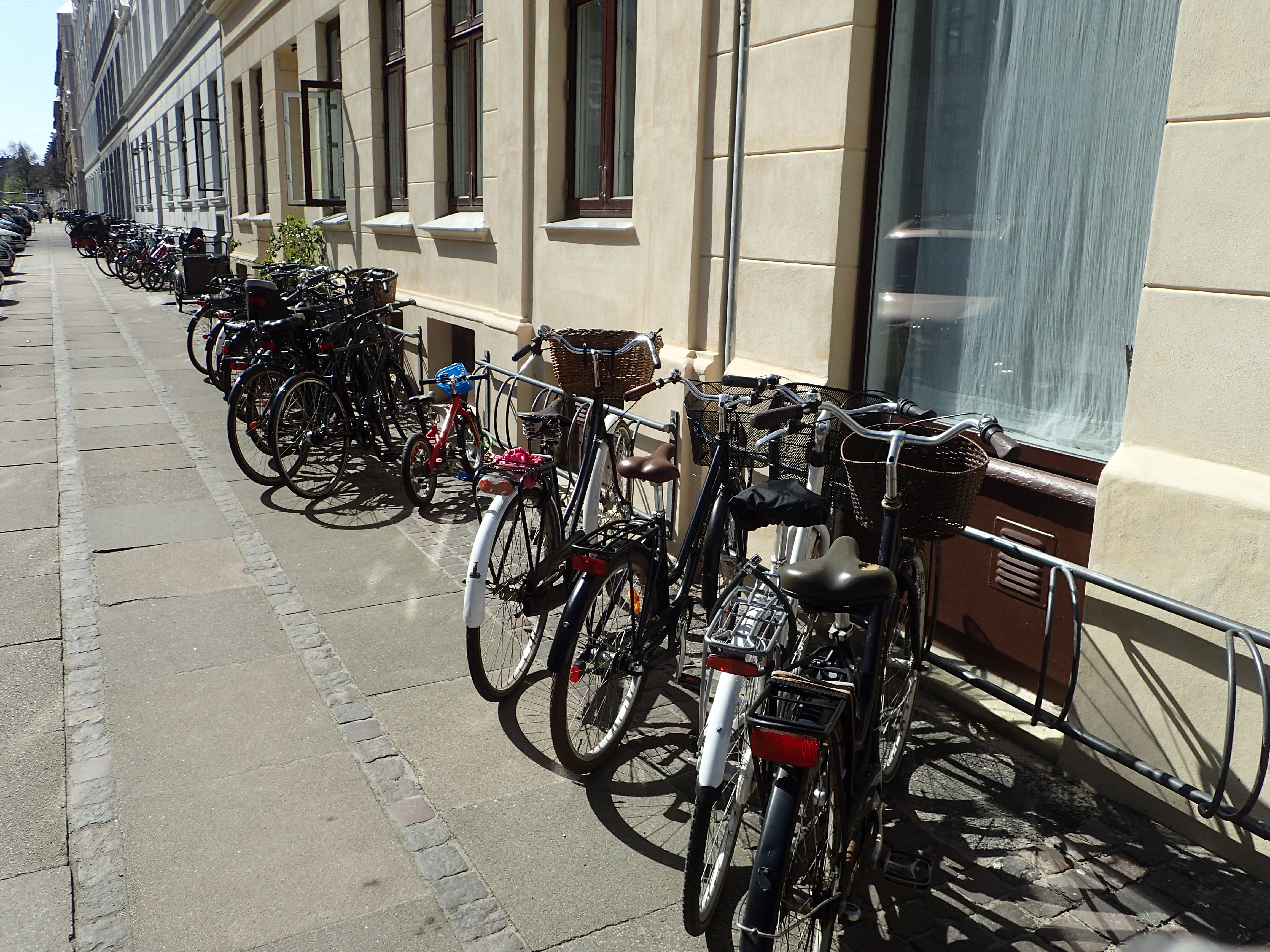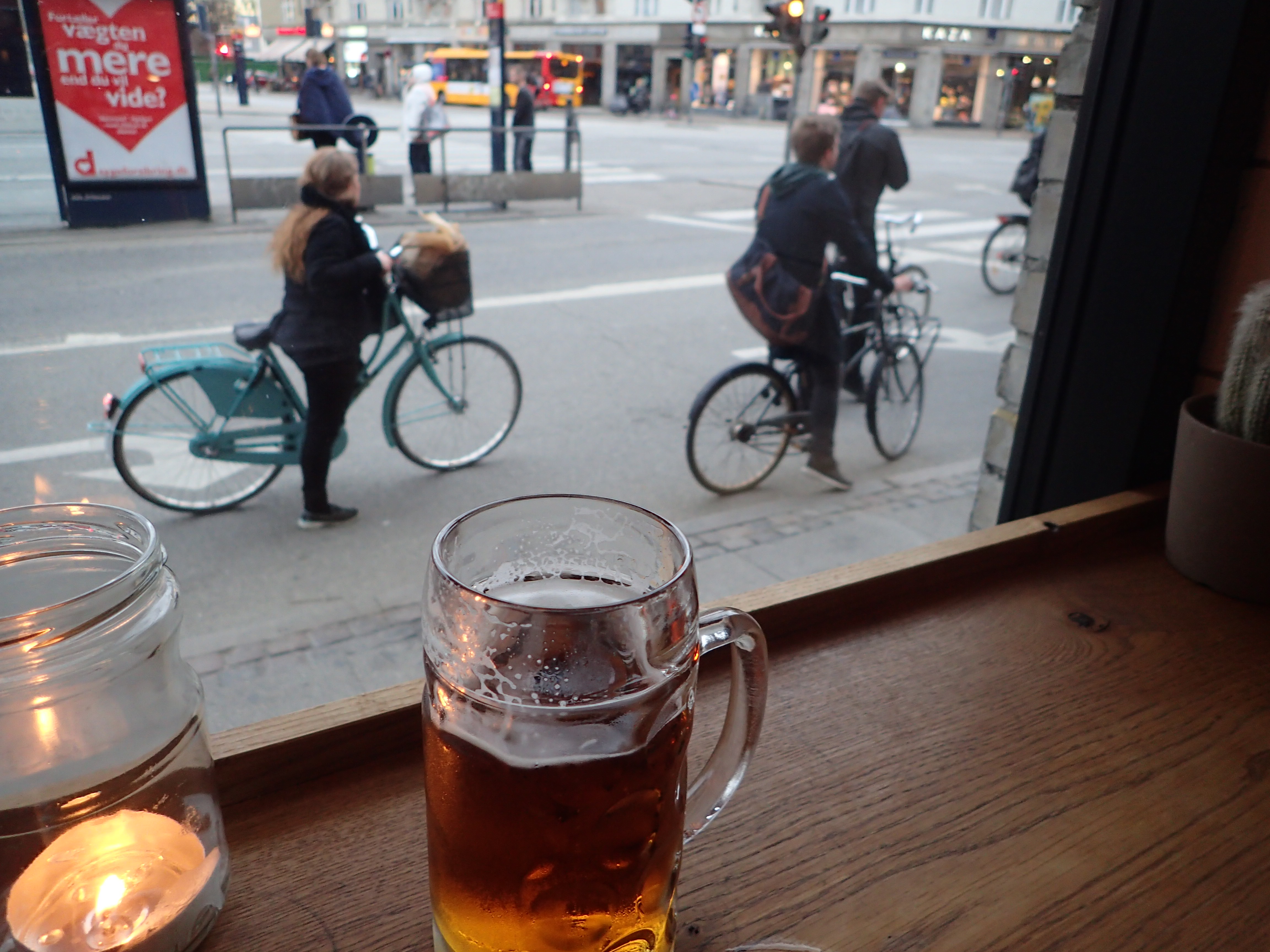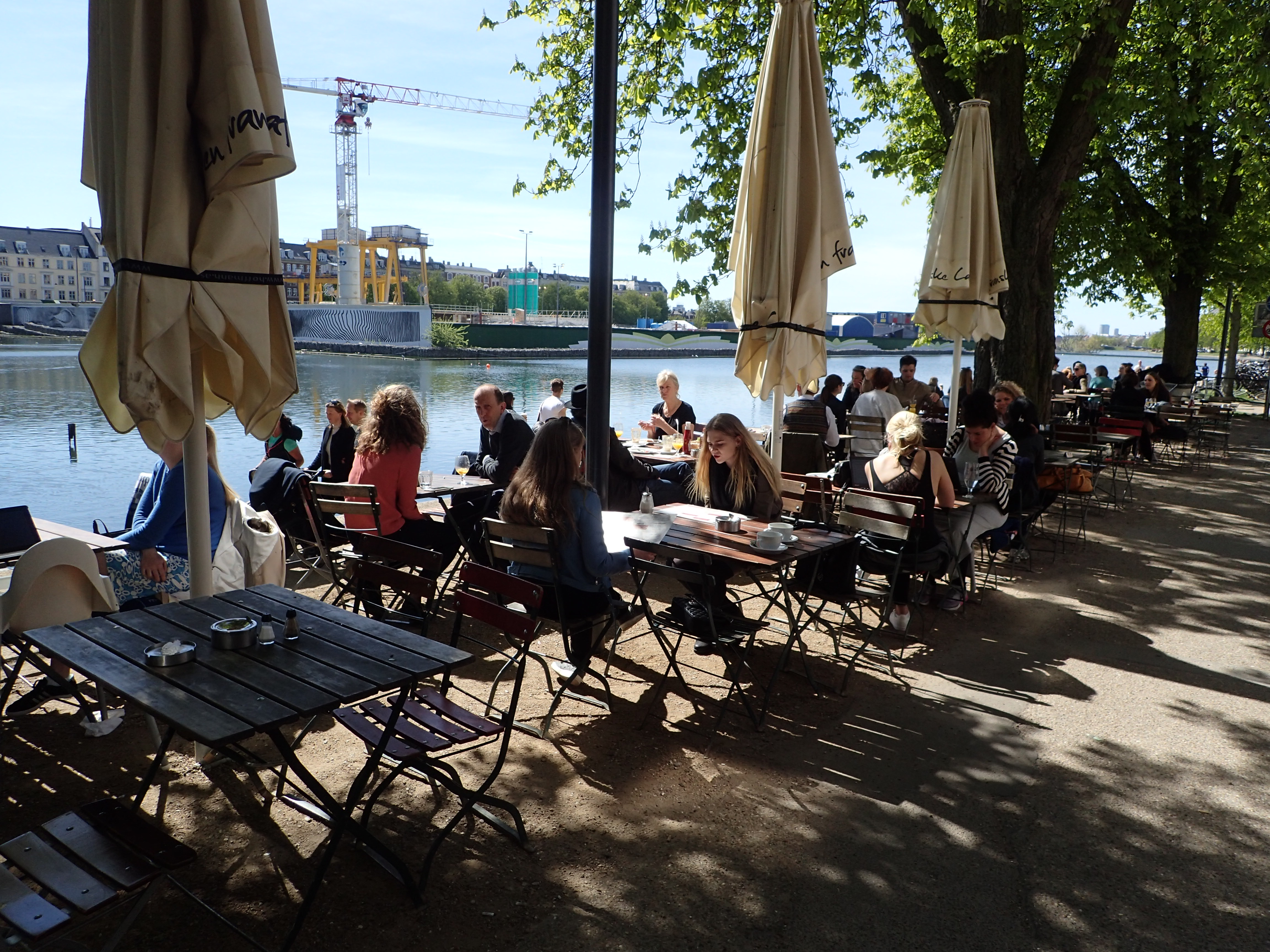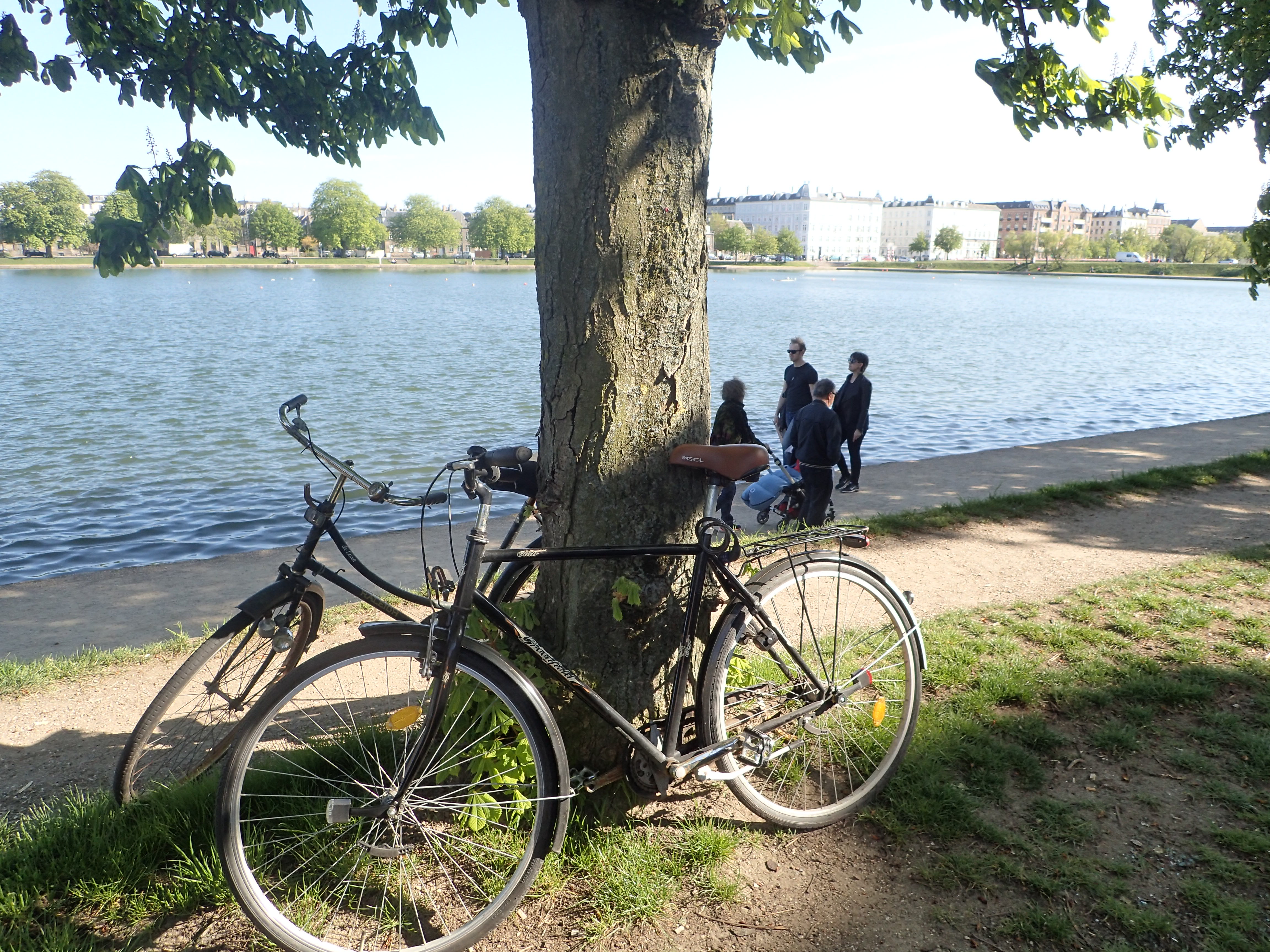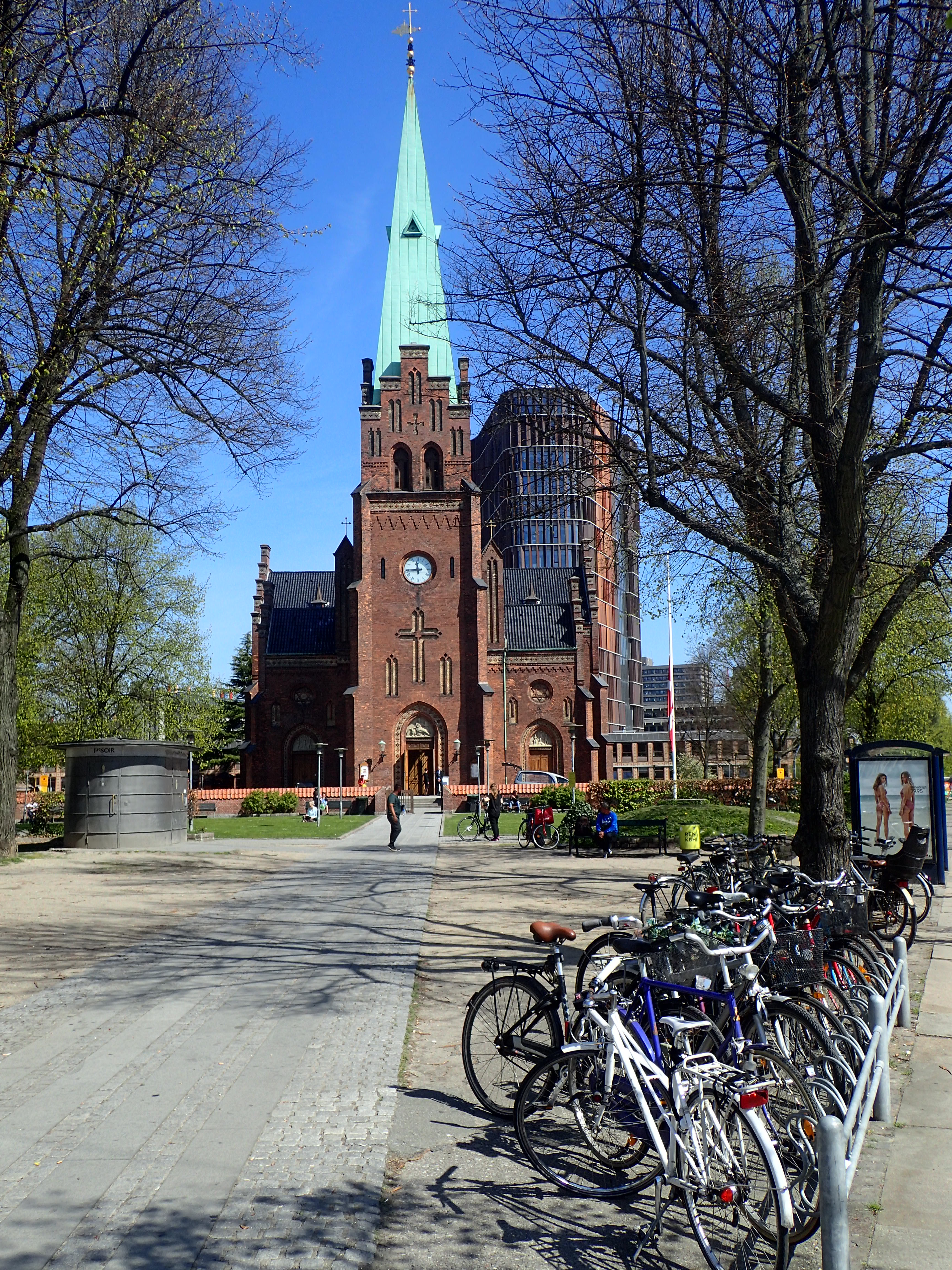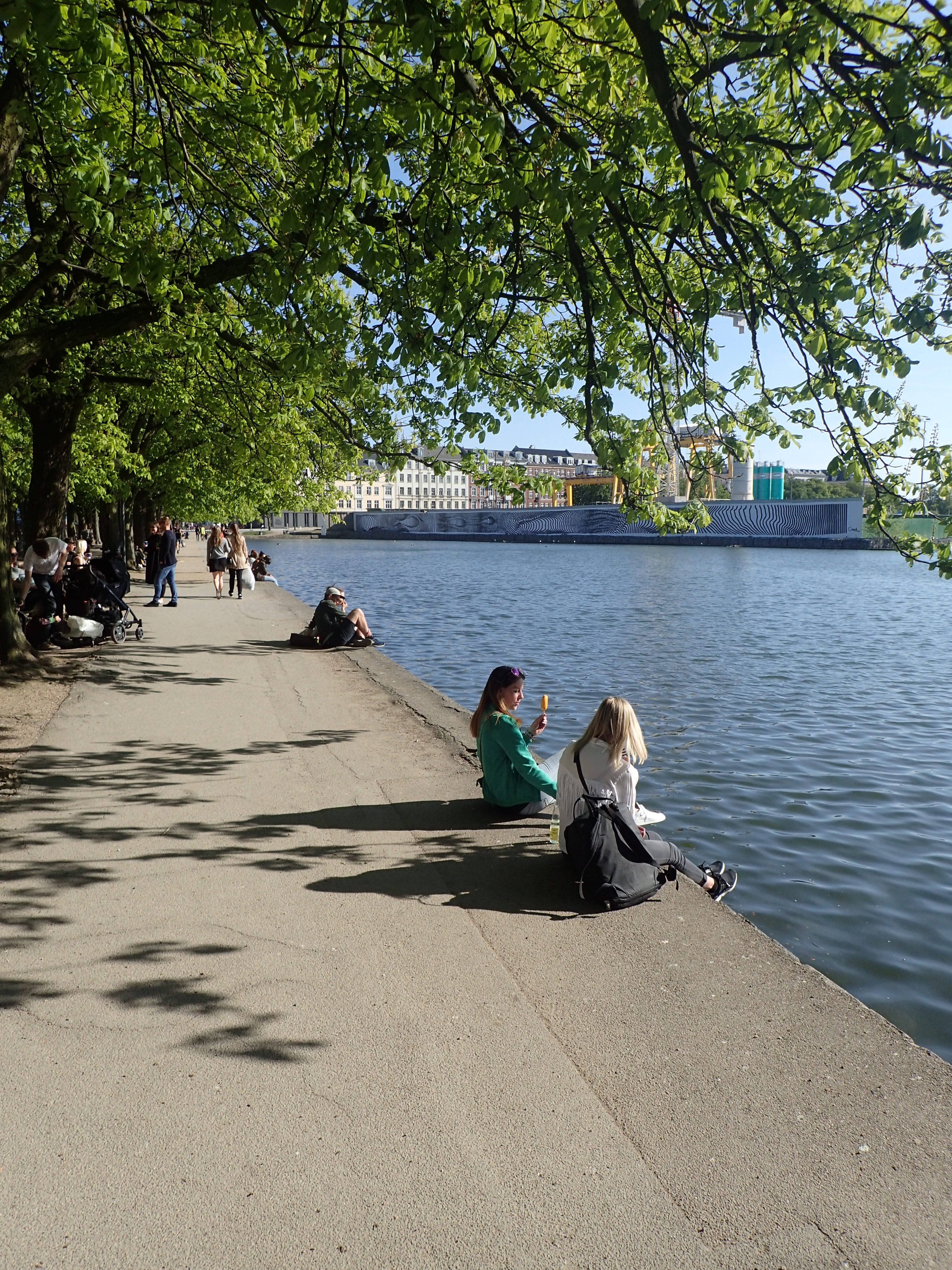My friend Ingrid Hagberg is living in Kuopio, Finland, where she has started work on a Master’s degree in toxicology. Ingrid enjoys getting around under her own power and like many students, is living without a car. She reported very good conditions for walking and cycling, so I asked if she could provide some pictures and comments on the types of active transportation infrastructure that she regularly sees in Kuopio.

A statue being buried in Kuopio. “This is how much snow we have”.
Kuopio has a population of about 118, 000. It is located about 390 km northeast of Helsinki. Its urban population density (1800/square km) is similar that of Canadian cities such as Ottawa (1900/square km) and Red Deer (1600/square km)<1>. It is also cold and snowy, with a subarctic climate and average high temperatures staying below freezing from November to March. Kuopio is situated slightly farther North than Whitehorse, meaning that long hours of darkness in the winter are a given. Finally, its topography would be familiar to many in Canada – with a mix of flat terrain and hilly forested areas reminiscent of the Canadian Shield. A quick review shows the elevation close to Kuopio’s downtown area ranging from about 90 m to 230 m <2>. You can check out the view from Kuopio’s ski jumping tower here.
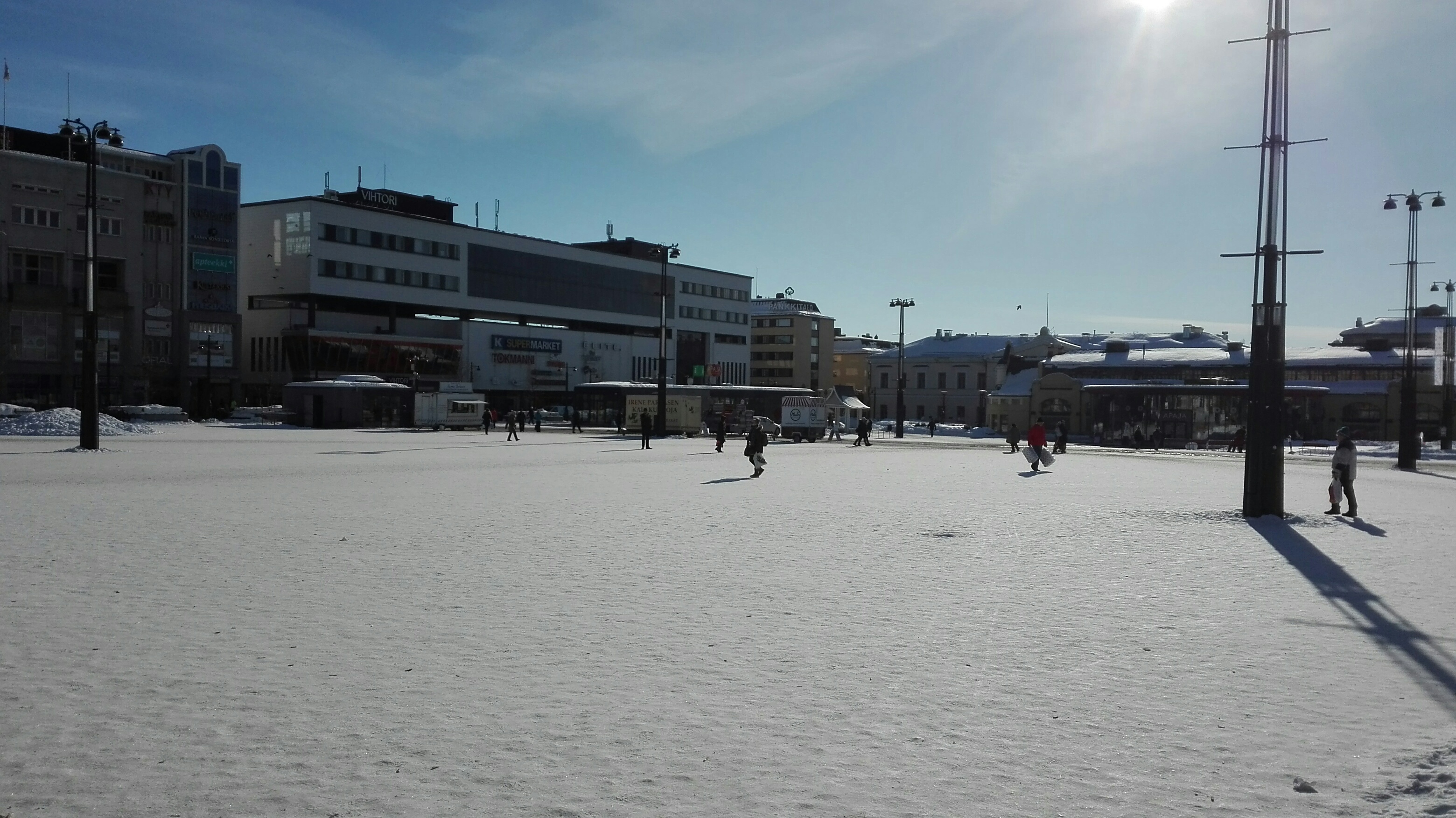
When the sun does come out in Kuopio, people obviously get out to enjoy it on their own two feet.
As in many Finnish towns, these characteristics have not dampened governmental commitment to infrastructure for active transportation. Kuopio might be most famous for its downtown network of pedestrian priority streets (rannikadut). Essentially, in the grid-patterned centre of the city, every second street is a laneway prioritized for walking and cycling.
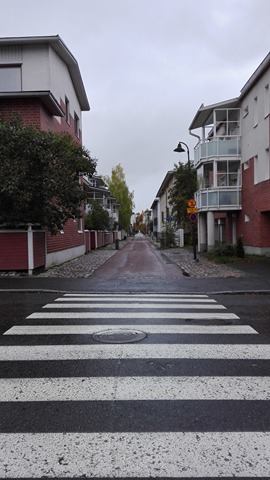
The entrance to one of Kuopio’s many pedestrian streets (rannikadut)
The City of Kuopio’s website <3> indicates that there are over 160 km of walking /cycling routes (multi-use paths) – a lot for a city of less than 120 000. There are also over 50 separate underpasses/overpasses for walking and cycling. Furthermore, speed limits in the downtown area are kept at 40 km/hr on main roads, and either 30 or 40 km/hr on residential streets. There is also a strong bus-based public transit network.
I think that characteristics like these – common to many Finnish cities – clearly help to explain relatively strong Finnish performance in active transportation. In Kuopio for example, cycling’s share of commuter transportation is about 10 per cent <4> – roughly four times the rate in Ottawa <5>. More broadly, Finland’s combined rate of walking, cycling and public transit use (about 40 per cent) is approximately double Canada’s (roughly 20 per cent) <6>. Finally, during the spring and fall, over 80 per cent of Finnish children travel to school by walking or cycling <7>. Canada’s overall school active transportation rate is only 25 % <8>.
While the factors contributing to the disparity likely include ones beyond the category of the specific design of active transportation infrastructure (e.g., importantly, urban planning, socio-cultural attitudes) I think anyone who spent some time looking at Finnish cities, towns, and villages would reach the conclusion that overall, their superior infrastructure and maintenance explain an important portion of the difference.
Below are some of Ingrid’s pictures, together with some brief comments. I have categorized them to draw attention to four things: 1.) physical separation; 2.) space; 3.) maintenance, and; 4) lighting. Each of these are advantageous for active transportation at any time of year, but hold particular advantages where winter weather (e.g., snow, ice, cold, and darkness) is a consideration.
1. Physical separation – Giving people walking and riding bikes their own space
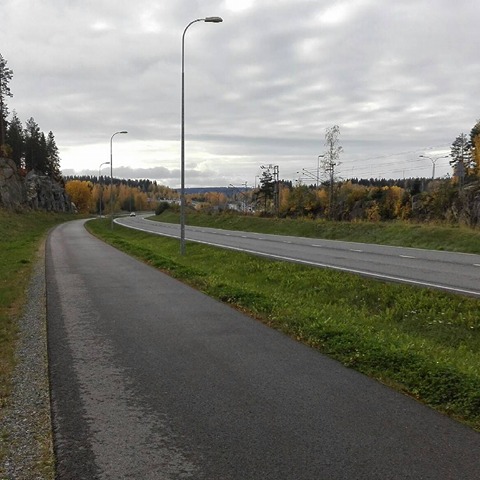
In the case above, a multi-use path along a divided four lane road benefits from a wide and green buffer zone. This makes it more comfortable to use at any time of year, and easier to maintain in the winter. Ingrid notes that this is actually just north of Kuopio, in Vuorela, and that you can get there from Kuopio using only multi-use paths.
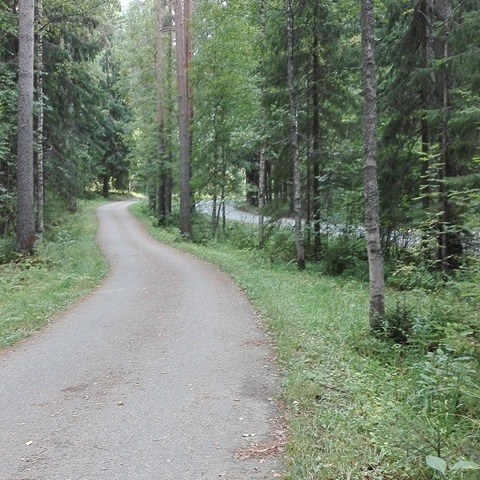
An example of a very scenic multi-use path in a picturesque setting that is clearly separated from the road – very appealing for non-motorized use.
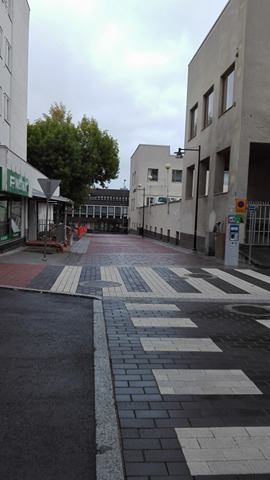
In one of Kuopio`s many pedestrianized streets, people on foot are in no conflict with motorists. Furthermore, the crosswalk is clearly delineated by its textured surface. I wouldn’t describe this particular arrangement as beautiful, but it is functional.
2. Space – Making sure there is lots of space makes for more comfortable travel and easier maintenance in the winter
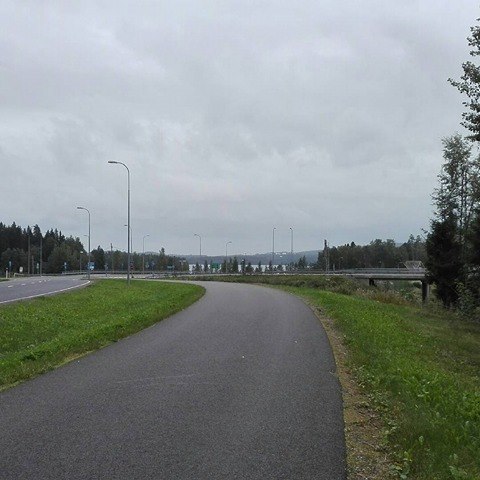
This picture gives a sense of the generous widths of many of the multi-use paths near Kuopio. Again, we see that the path has significant separation from the roadway. This one is in Sorsasalo, and is also connected directly with the multi-use paths in Kuopio.
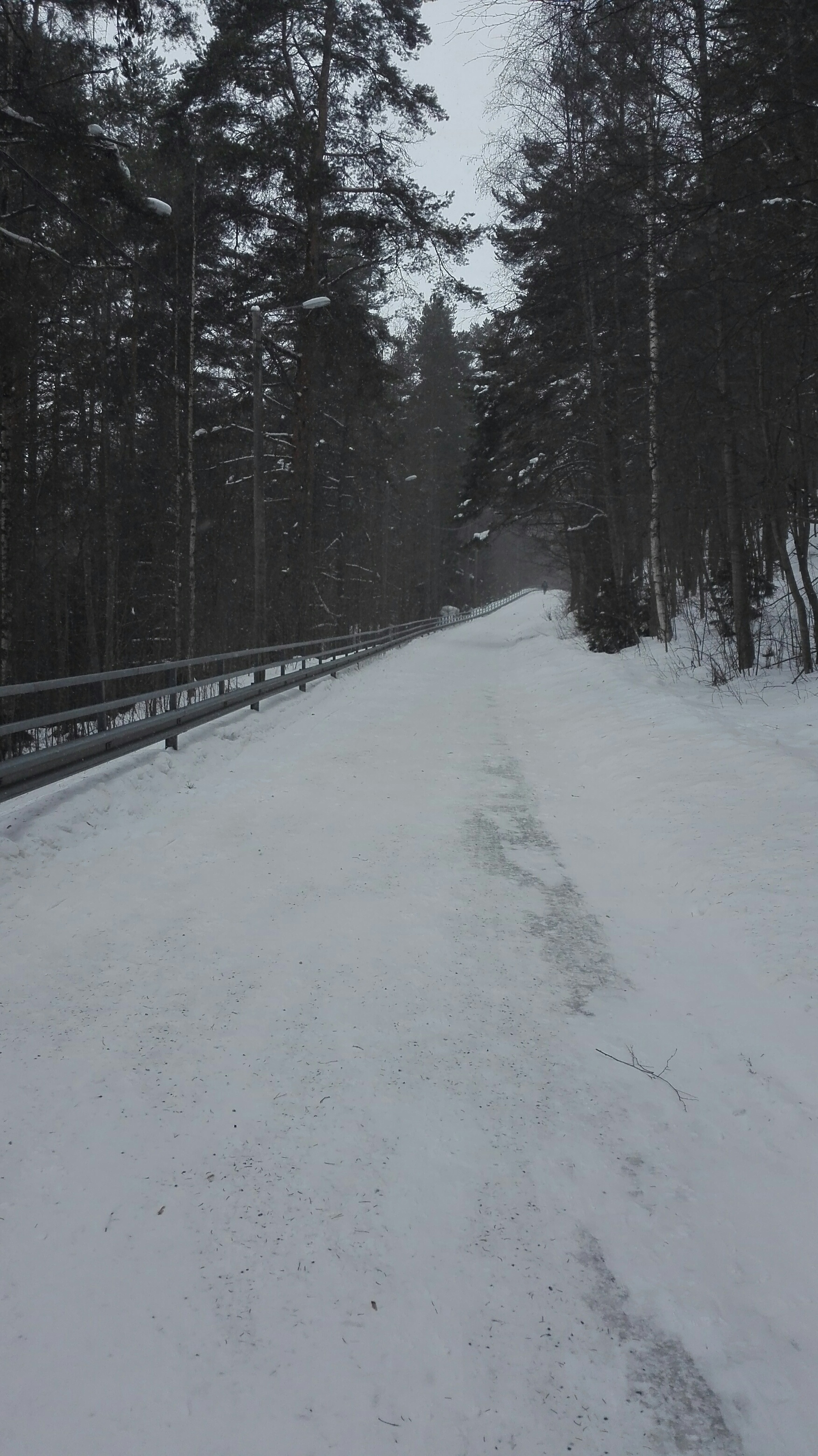
Here we see a wide multi-use path in a forested setting in the winter. It looks cold and blustery, but the usable width of the path remains generous even as the snow that is removed by the maintenance crews piles up on the side.
3. Lighting – Makes it appealing
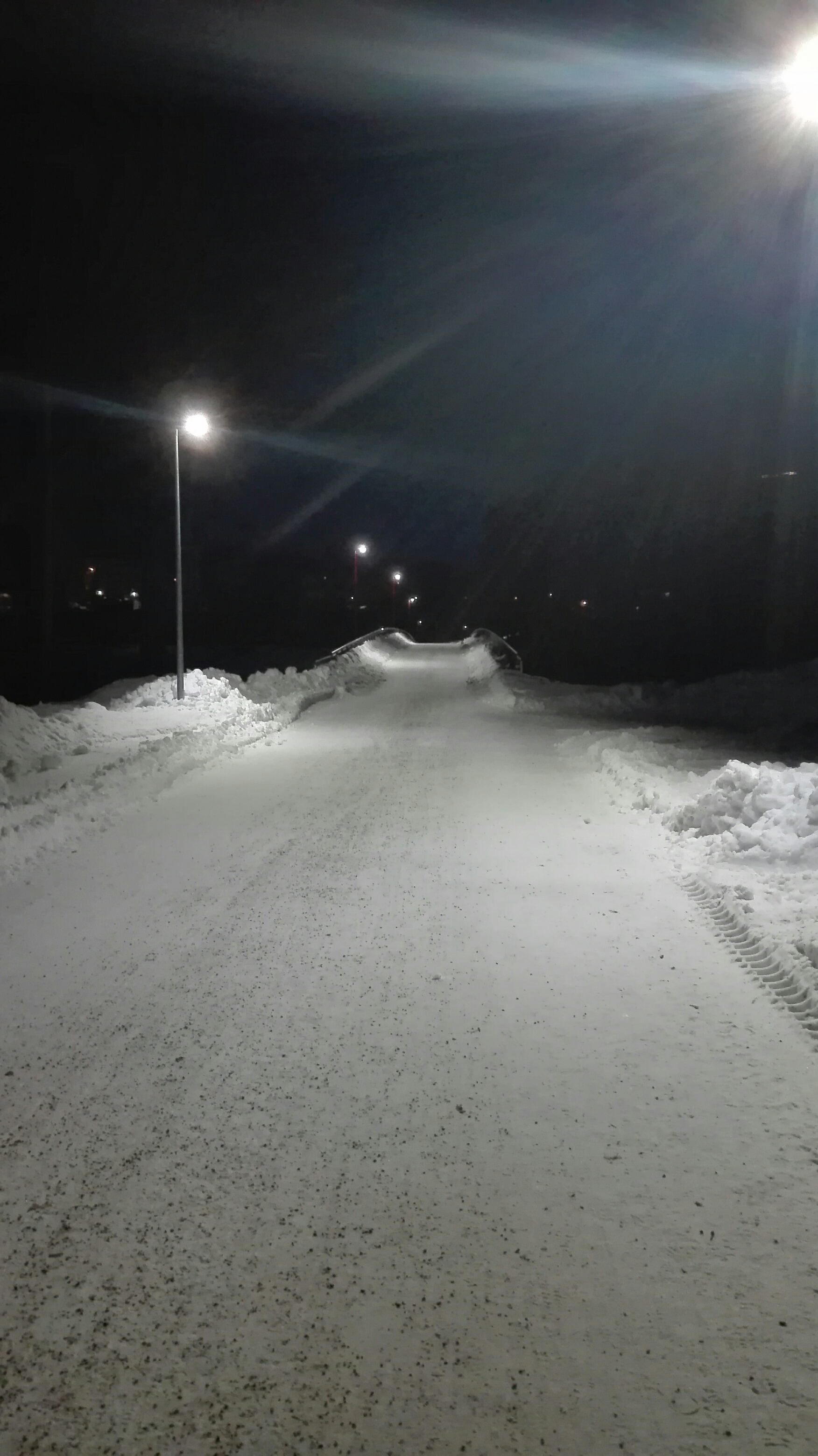
Generally speaking, Finnish municipalities do a very good job with lighting their facilities for walking and cycling. There is motivation to do so given the very limited amount of daylight during the darkest winter months. Kuopio is clearly no exception. Ingrid points out that this is a pedestrian/cycling only bridge going over a highway, while the bridge for cars is 1 km away. She says that shortcuts of this type (specifically for non-motorized traffic) are common, appreciated, and popular!
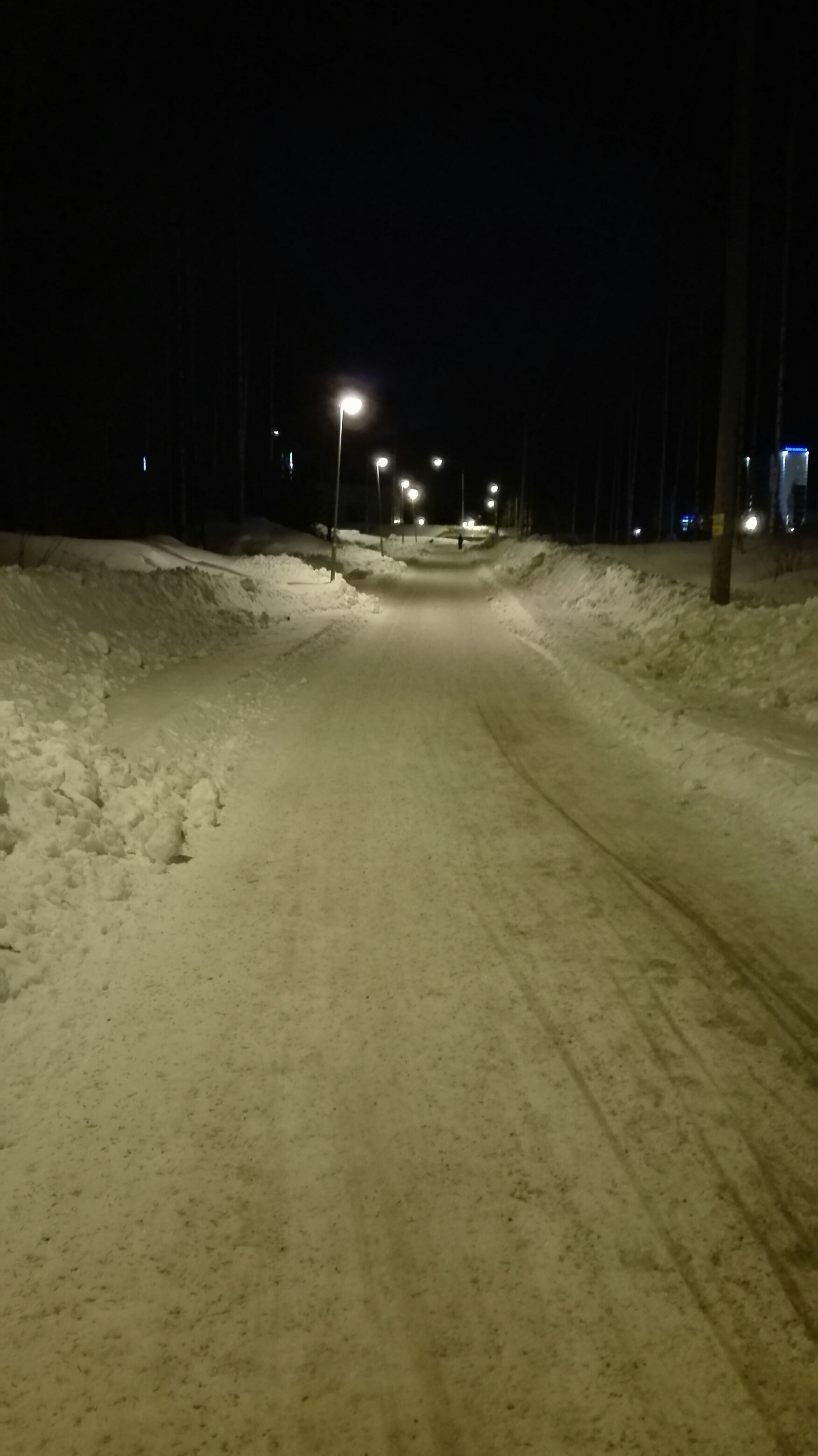
Just to prove that the first picture was no fluke, here is a second example of excellent lighting for active transportation in Kuopio.
4. Maintenance – Standards as high (or higher!) than for driving
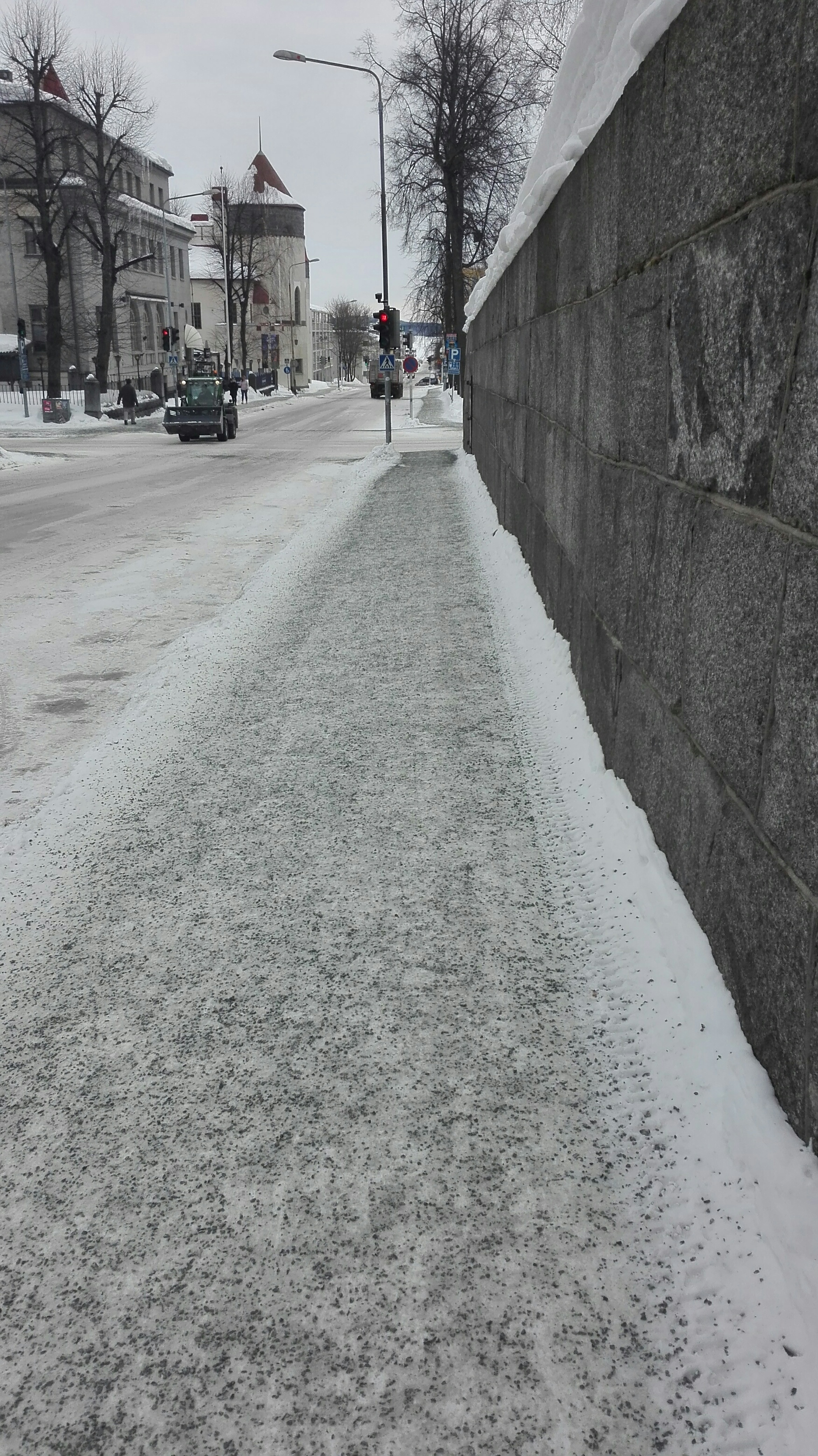
Finnish towns don’t generally use much salt for either car or active transportation infrastructure. They are diligent in their snow removal efforts and use of gravel/sand. Generally, they insist on a very high standard of maintenance for their sidewalks and multi-use paths.
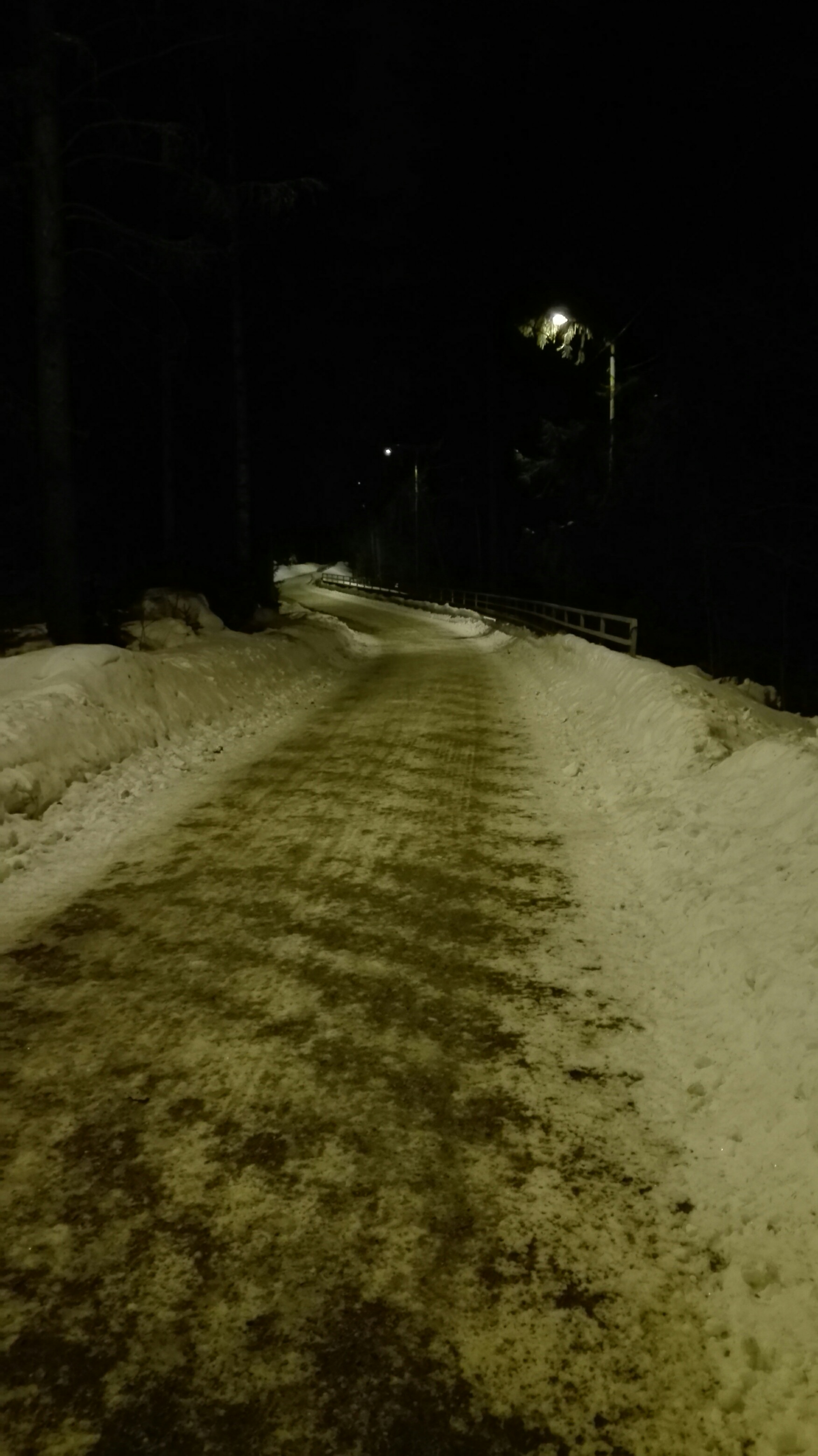
In this example, we see it all: Dedicated and ample space, complete separation from the roadway, a high level of maintenance, and very good lighting.
You can be sure that Ingrid has been really enjoying all that Kuopio has to offer for someone without a car. In fact, she says that her exclusive use of bicycle, pedestrian and even cross-country skiing facilities for transportation has meant that she has trouble giving people directions to her apartment if they are coming by car.
It is clear that there are things we can learn by looking at examples like Kuopio. At one level, they show us that it is possible to provide very good conditions for walking and cycling in very challenging climates and circumstances similar to what we experience in Canada. At another, given the strength and long-term nature of the commitment, it is clear that governmental authorities have decided that the investment is worth it.
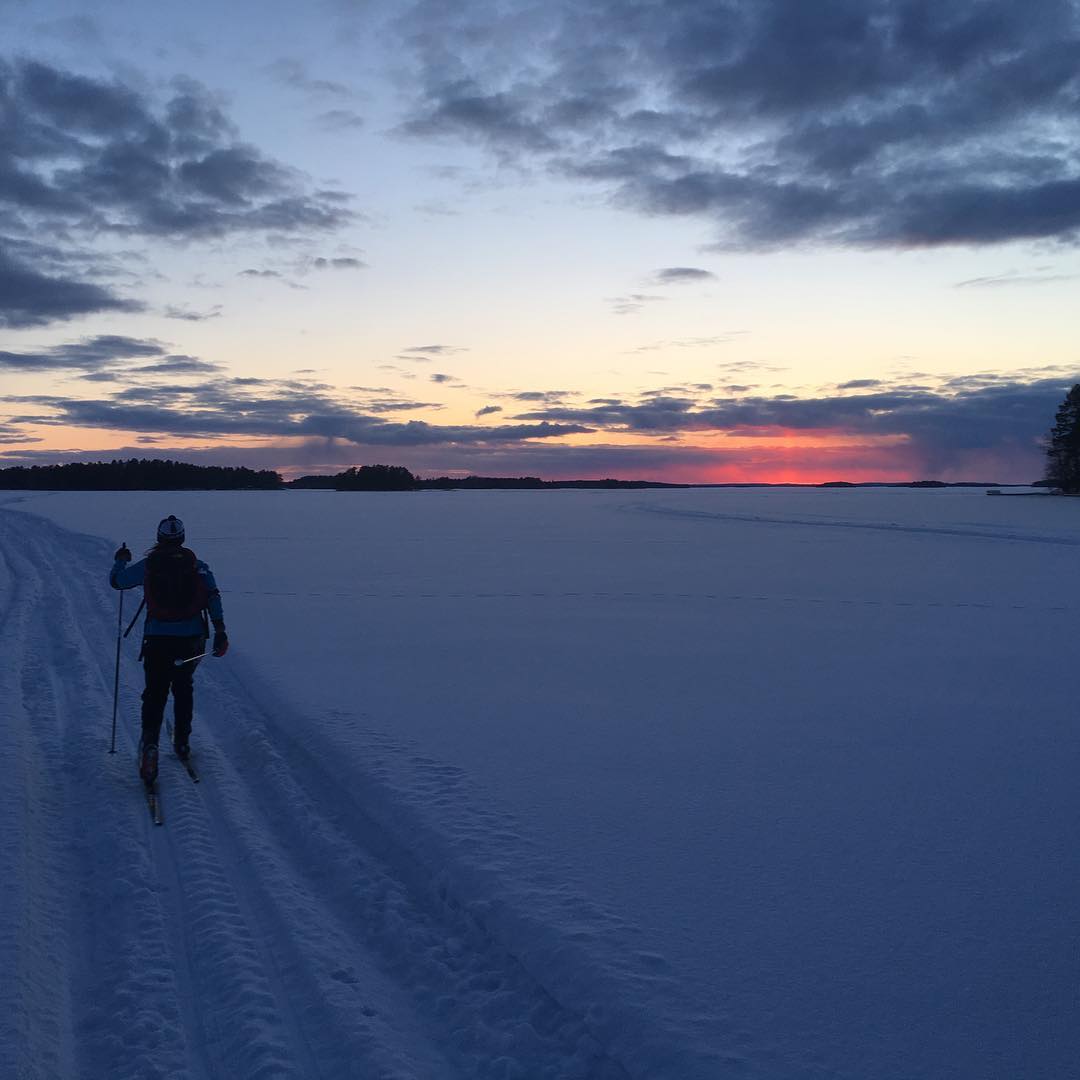
Here we see Ingrid using a somewhat less common (but at least equally worthy) form of active transportation to travel directly 8 km from her apartment to an authentic Finnish sauna, complete with a hole in the ice for swimming.
REFERENCE LINKS
<1>http://www.demographia.com/db-worldua.pdf
<2>http://en-gb.topographic-map.com/places/Kuopio-5613117/
<3>https://old.kuopio.fi/en/web/streets-and-traffic/pedestrian-and-bicycle-traffic
<4>http://www.ibikeoulu.com/presentations/timo_perala_kuopio_maintenance_quality_requirements.pdf
<5>http://www12.statcan.gc.ca/census-recensement/2016/as-sa/98-200-x/2016029/98-200-x2016029-eng.cfm
<6>https://www.ncbi.nlm.nih.gov/pubmed/19164816
<7>https://www.ncbi.nlm.nih.gov/pmc/articles/PMC5141370/
<8>https://www.participaction.com/sites/default/files/downloads/2016-06-16%20EN%20Highlight%20-%20FINAL%20DESIGN%20-%20singles.pdf
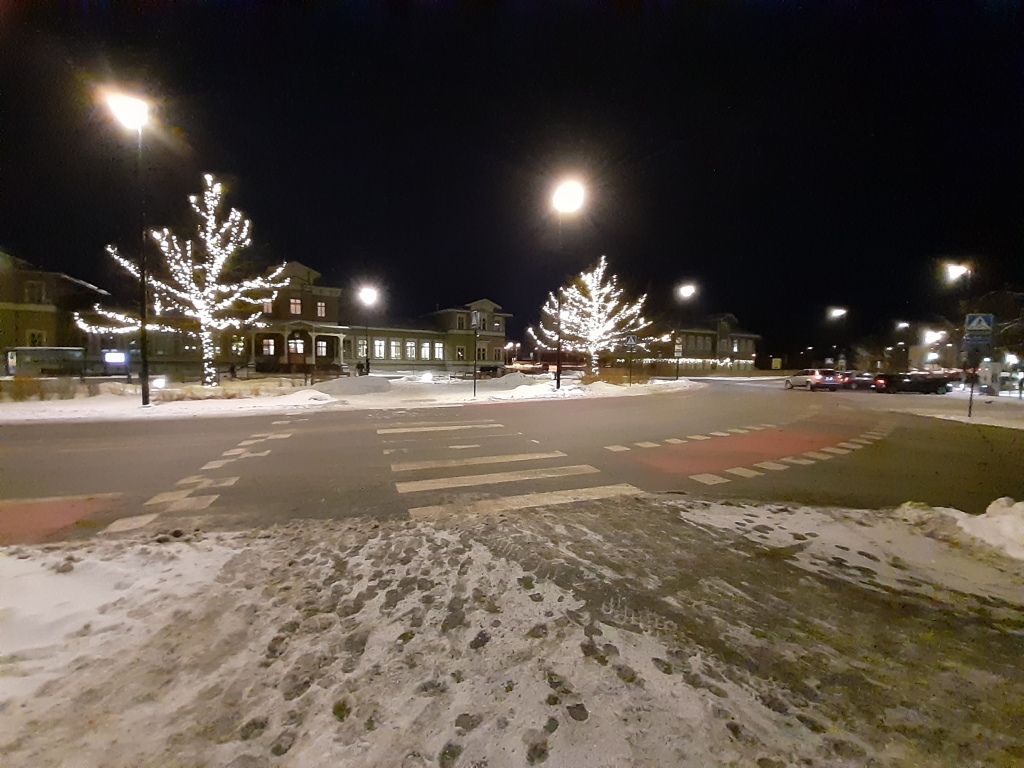
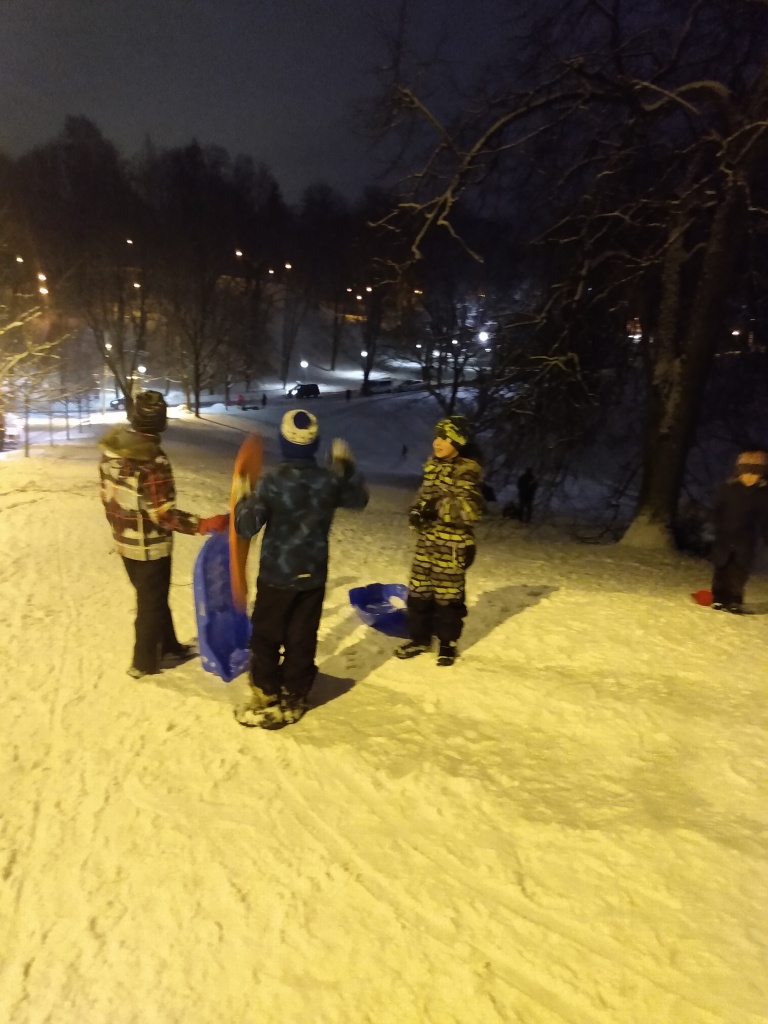
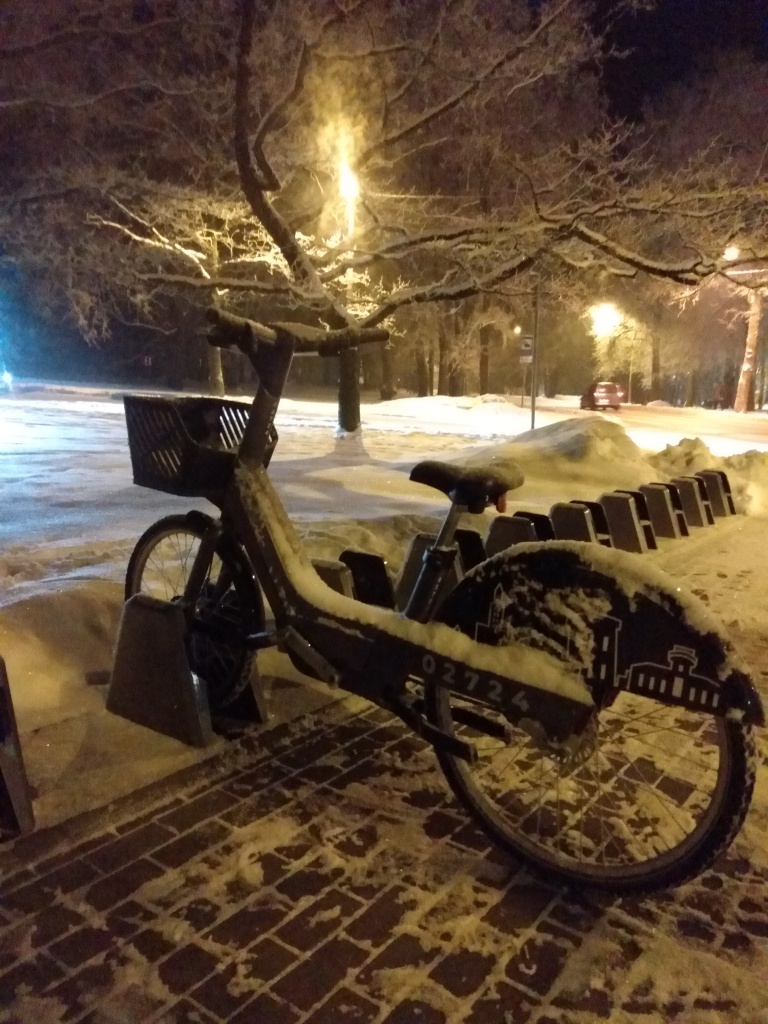
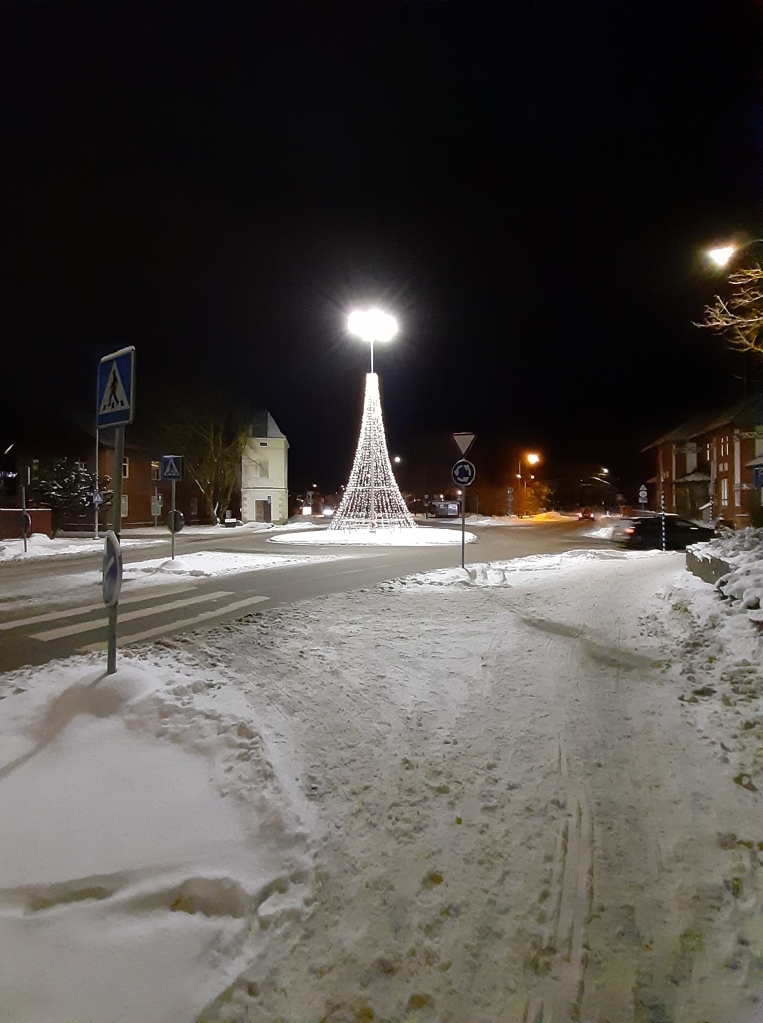
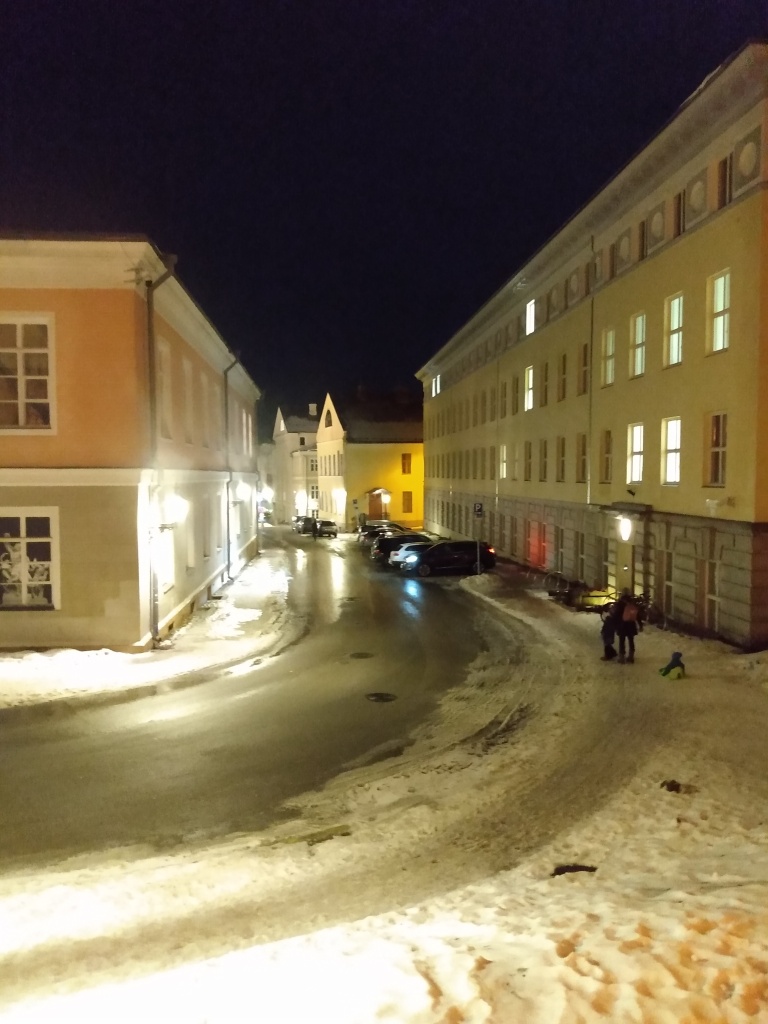
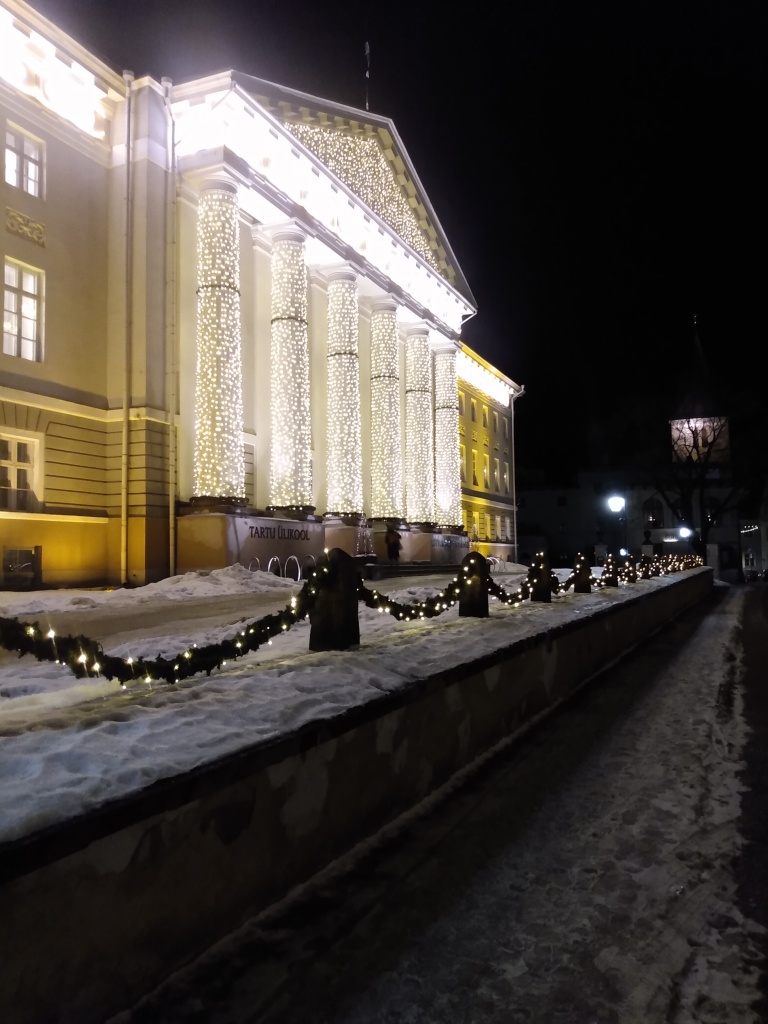
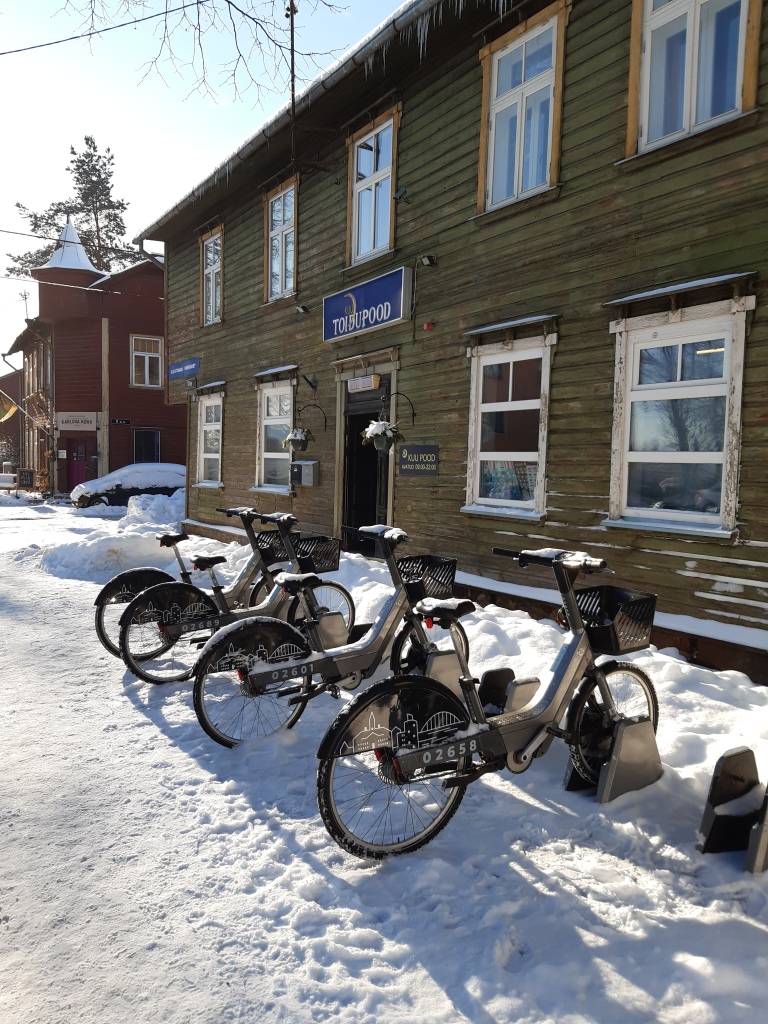
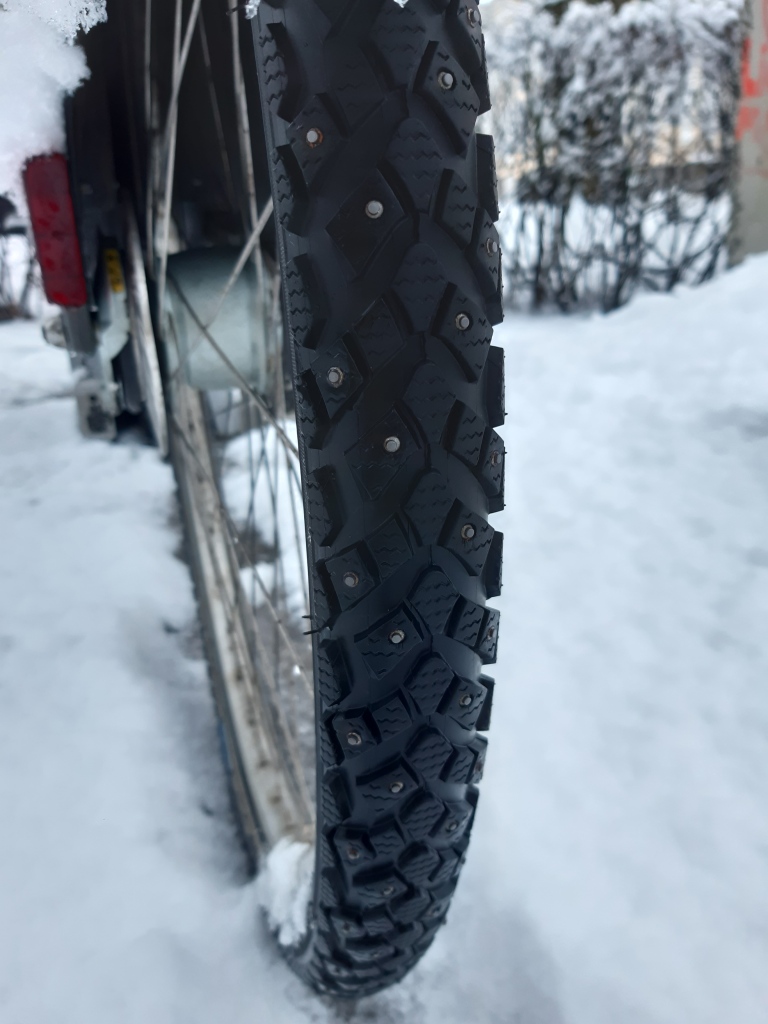




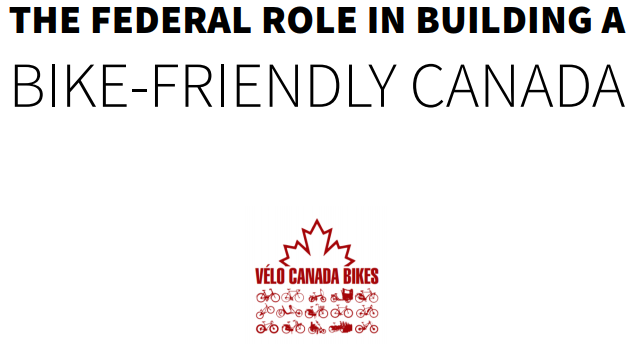













![WP_20161125_08_51_33_Pro[1]](https://silverbulletmobility.files.wordpress.com/2017/01/wp_20161125_08_51_33_pro1.jpg)
![WP_20170202_08_49_13_Pro[1]](https://silverbulletmobility.files.wordpress.com/2017/03/wp_20170202_08_49_13_pro1.jpg)
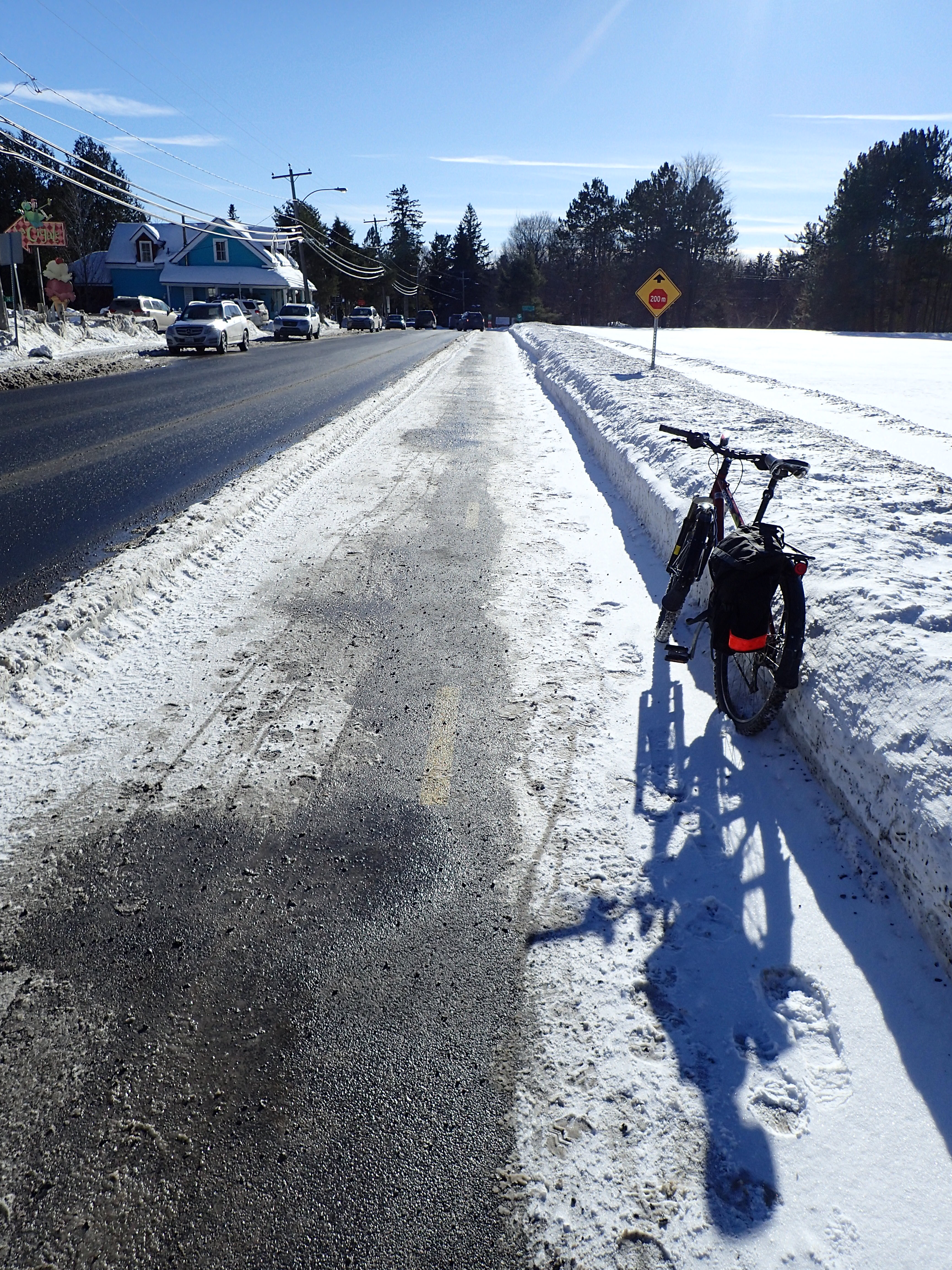
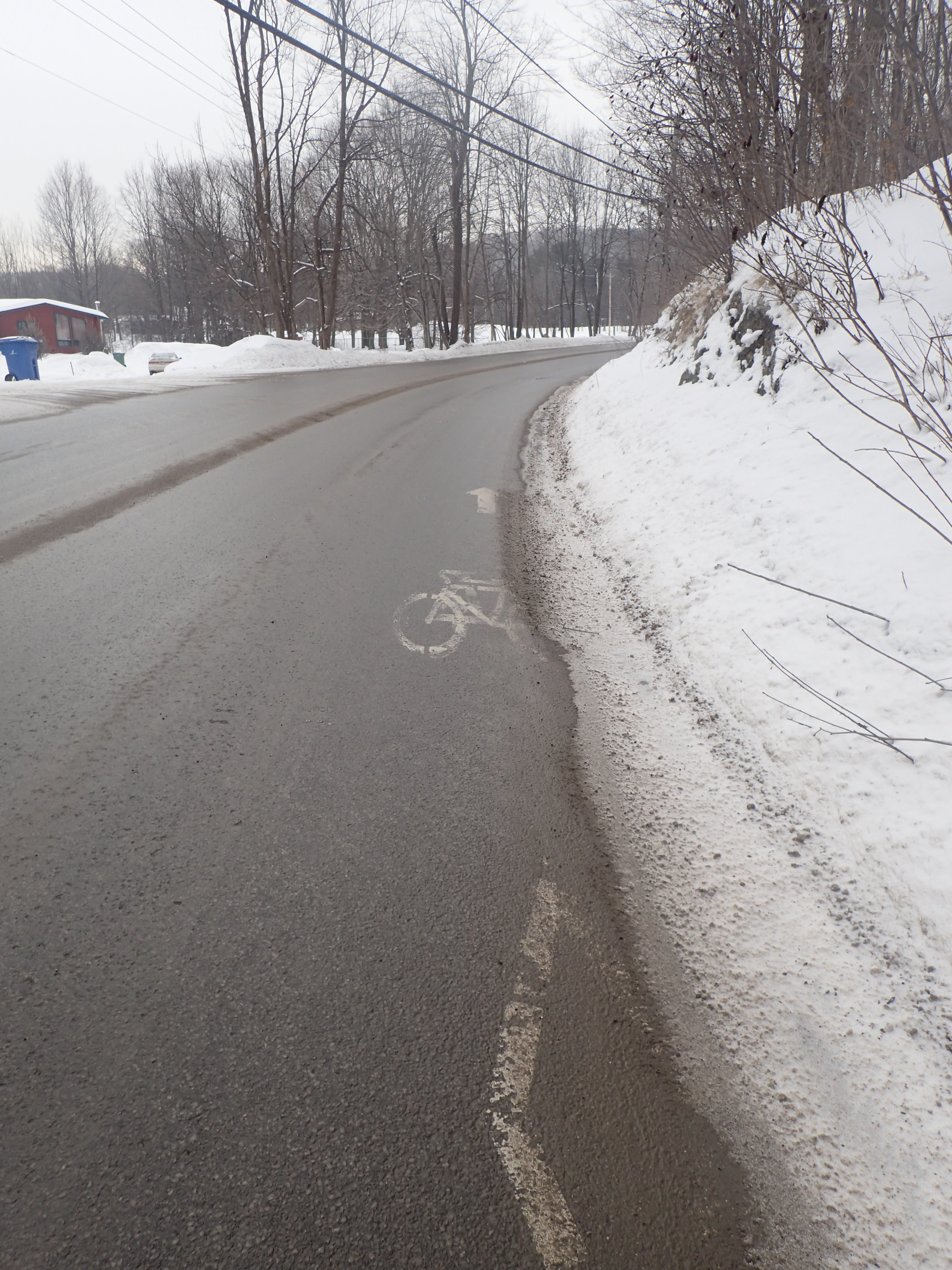
![WP_20170213_09_18_05_Pro[1]](https://silverbulletmobility.files.wordpress.com/2017/03/wp_20170213_09_18_05_pro1.jpg)
![WP_20161014_11_22_40_Pro[1]](https://silverbulletmobility.files.wordpress.com/2017/03/wp_20161014_11_22_40_pro1.jpg)
![WP_20161207_10_41_19_Pro[1]](https://silverbulletmobility.files.wordpress.com/2017/03/wp_20161207_10_41_19_pro1.jpg)
![WP_20161222_16_25_53_Pro[1]](https://silverbulletmobility.files.wordpress.com/2017/03/wp_20161222_16_25_53_pro1.jpg)
![WP_20161221_16_37_48_Pro[1]](https://silverbulletmobility.files.wordpress.com/2017/03/wp_20161221_16_37_48_pro1.jpg)
